Inbox and environment News: Issue 497
June 6 - 12, 2021: Issue 497
Proposal To Allow Dogs Offleash On To Mona Vale Beach And Palm Beach
Our Local Wildlife Feels Too
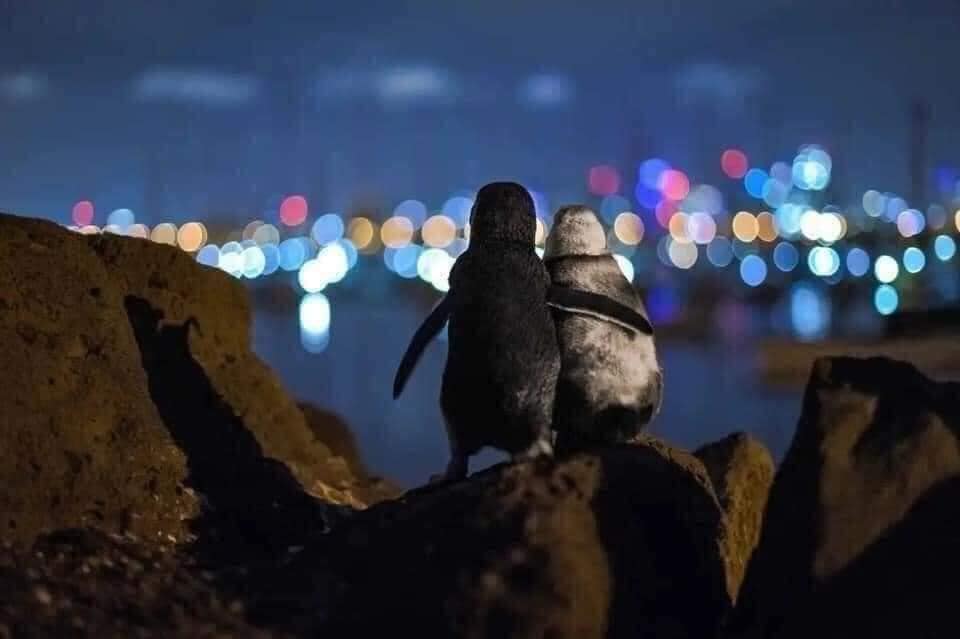
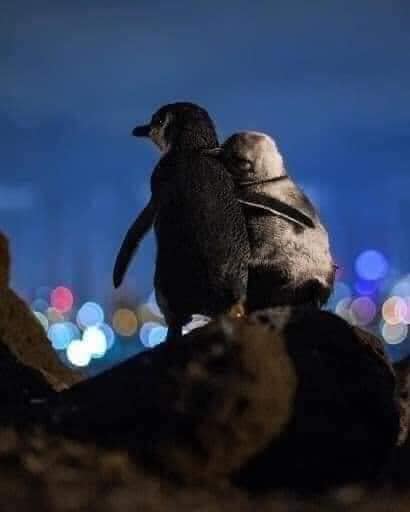
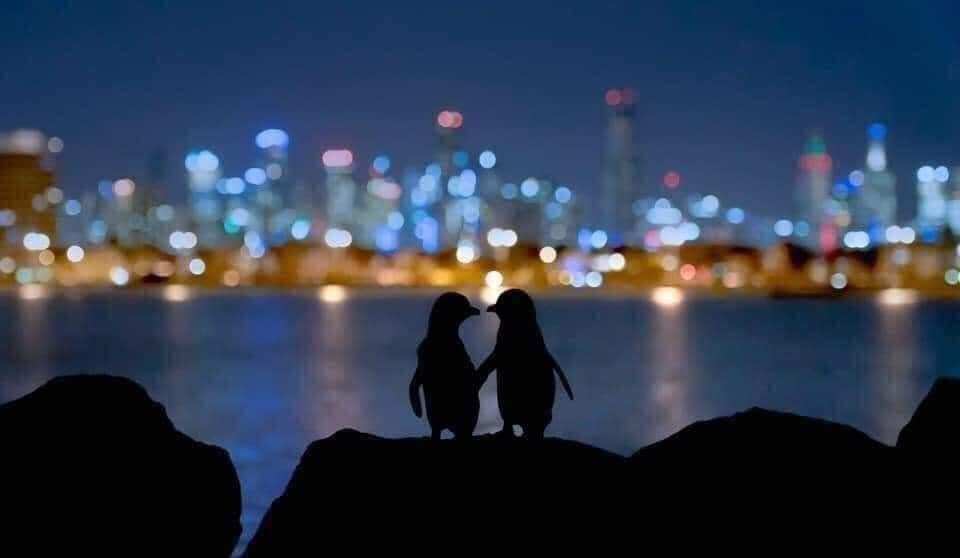
Ocean Photography Awards 2021
Our Own Local Fairy Penguins: World Oceans Day 2021 - June 8th
Here's some more insights to get you in the mood for celebrating where we live. This year the theme of World Oceans Day is The Ocean: Life and Livelihoods. Around 80% of Australians live on the coast, so our lives are intrinsically linked to the ocean – it provides us food, livelihood and a wonderful playground that brings joy and relaxation. We also share this place with many other animals - turtles, all kinds of shorebirds, seals, the whales you will see passing on their migration north at present and Fairy Penguins. Their lives and them getting to live in peace and safety are important too and we are now, between June and August, into their breeding season.
In June 2019 we brought you some news about a project to put fireproof burrows on Lion Island for the colony that lives there - these penguins are seen in the Pittwater estuary and right along the coastal beaches. They used to have nests and colonies on the beaches all along our coast as well - at Turimetta Beach, Narrabeen and Long Reef in particular.
Here's some at Narrabeen in 1955 - and reports of them at Long Reef as well:
When summer comes . . .
.jpg?timestamp=1619878281381)
HE MUST go down to the sea again, the lonely sea and the sky- but only for dinner. This hungry little chap couldn't wait for the rest of the flock that gathers for a nightly 3 a.m. party on the beach. Then they return to their nests to sleep all day.
.jpg?timestamp=1619878349216)
HOUSING TROUBLES begin, at Mrs. E. Whittaker warns off a mother bird for squatting with its young beside her shed. But (inset) the penguin family sits tight till ready to vacate.
PENGUINS at the bottom of their garden
Spring comes with a difference to the gardens of waterfront homes in Ocean Street, Narrabeen, north of Sydney. It brings flocks of fairy penguins-the smallest of the breed-sauntering in from the sea to take up residence for their nesting season. As daytime guests they're welcome, but at nightfall they head down to the sea for food-making noises that keen everyone else awake, too. They stay for a few months.
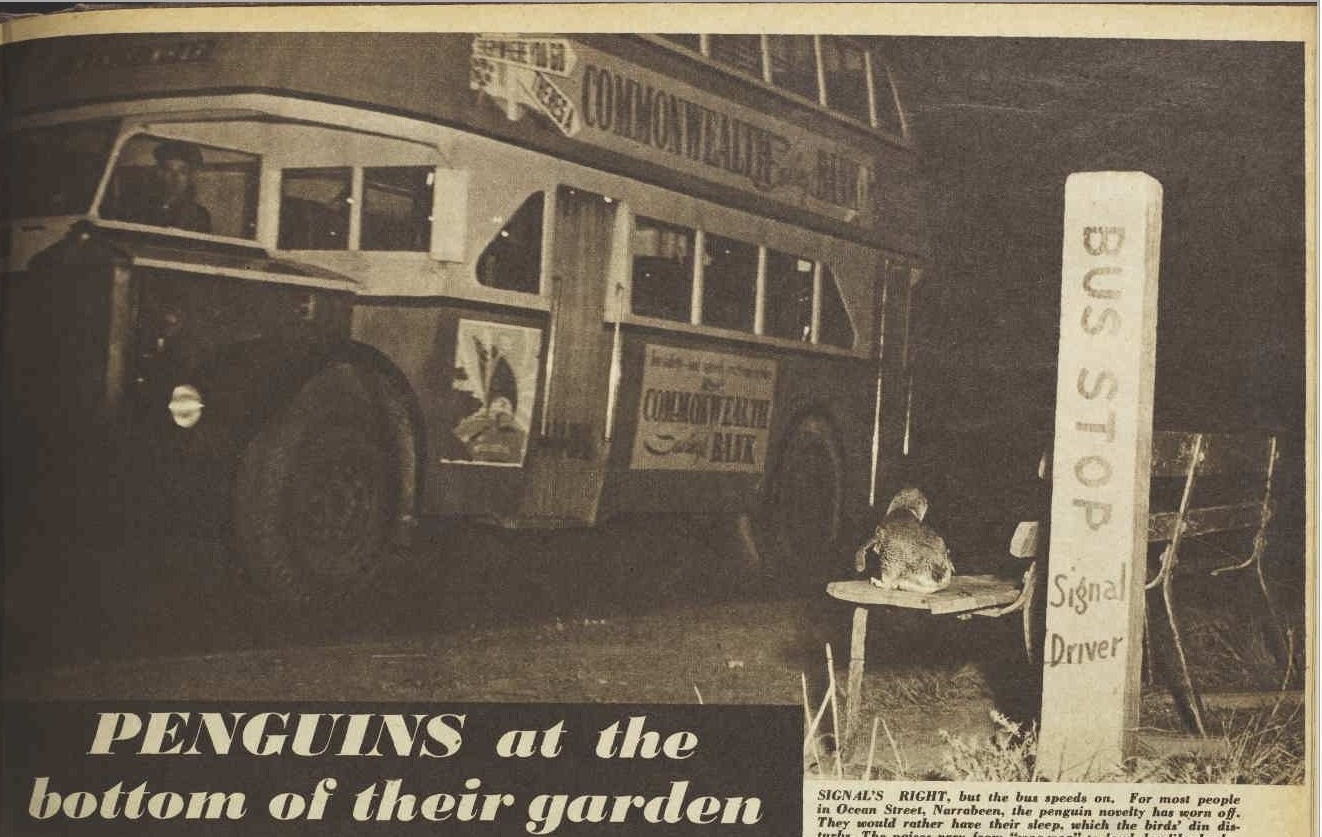
HUNTING for invaders under the house, this family is helped by neighbors. Householders have M tried fencing and boarding around their houses, but still the penguins come to nest each year.
SIGNAL'S RIGHT, but the bus speeds on. For most people in Ocean Street, Narrabeen, the penguin novelty has worn off. They would rather have their sleep, which the birds' din disturbs. The noises vary from "woo-woo" to loud dog-like barks.
.jpg?timestamp=1619878478650)
THE MAN who came to dinner takes it for granted he's welcome as Mr. W. Gillanty greets him. Residents, particularly light sleepers, now have to resign themselves to a trying time while the penguins, which are protected, are in charge.
PENGUINS at the bottom of their garden (1956, December 12). The Australian Women's Weekly (1933 - 1982), p. 23. Retrieved from http://nla.gov.au/nla.news-article41852332
Marine Parade North Avalon resident and ornithologist Neville Cayley is mentioned in this one:
Two Little Penguins
AS Mr. Neville Cayley mentions in the 'Mail' that there is very little known regarding the length of time these penguins care for their young before turning them out, I thought the following account would be of especial interest to readers of 'Outdoor Australia.'
At a crowded Museum lecture Mr. Kinghorn told us this unusual incident. One morning towards the end of August, 1921, the peace and serenity of some dwellers at Collaroy Beach were disturbed by extraordinary noises and weird cries at the back door. When the astonished owner of the house opened the door in rushed two little penguins, which with loud voices announced their intentions of staying. Then they danced about and waved their little wings in a most ingratiating way. After a short time these noisy visitors were shown the door, and they disappeared for a while. But, having chosen their home, Mr. and Mrs. Penguin returned later, and as they could not get inside the house they went underneath as far as they could get, and there made their nest of seaweed. The noise every night was almost unbearable; they would scream and cackle, and later, after about six weeks their songs of joy were terrific, for two youngsters were hatched.
About four months after their arrival the penguin family suddenly departed. Where they wintered is their own secret: but late in the following August a terrible cackling outside advised these householders that they were back. When the door was opened Mr. and Mrs. Penguin marched triumphantly in, followed by two grown chicks, which were inquisitive and rather shy. Then followed extravagant dances of greeting and vociferous songs of 'Here we are again,' etc., in which the young ones also joined.
They could not be quietened, and the neighbours hastened across to see if someone had gone mad. The owners of the house put the whole family down on the beach and drove them away. It was then that the parents sent off the chicks to fend for themselves, and they themselves returned later and went under the house to their old nest. The celebrations were so overpowering that the householders took down some boards next day, got the noisy pair out, and drove them at night by car to Palm Beach, about twelve miles distant, and there left them. But next morning saw them back.
They were taken a second time, but returned, and were allowed lo stay; but a home was made for them in the far corner of the garden. The house side was netted off and a hole cut in the fence to allow them free access to the beach. They made a nest of seaweed, and later two eggs were laid. The birds look it in turn to sit on them, and there was always much shouting and scolding when one returned from the sea at night.
After about six weeks two sooty-brown chicks appeared, and the noise that night and the next few days while the celebrations lasted was tremendous. The parents took it in turn to fish and swim during the day that followed, but at night they often went out together to find a suitable supper, and about 9 p.m. would return, arguing together as they came up the beach. The following summer my father saw a young penguin land on the rocks at Coogee. I think it quite likely that it was one of the young ones turned out at Collaroy. It was evidently not very used to fending for itself, for a patch of feathers was torn from its shoulder, possibly through not being an adept at landing.
At the time of the lecture these queer visitors were still in residence at Collaroy, and what became of them I do not know. It is likely enough that the nesting-place on North Head mentioned by Mr. Cayley is occupied by these little penguins or their descendants. Outdoor Australia (1925, March 18).Sydney Mail (NSW : 1912 - 1938), , p. 10. Retrieved from http://nla.gov.au/nla.news-article159721727
It is recorded that two Fairy penguins for a number of years made seasonal visitations to Collaroy, near Sydney, and often laid their eggs under the floor of one of the houses there. — F.J.B. Quaint and Beautiful Sea Birds (1934, October 31). Sydney Mail (NSW : 1912 - 1938), , p. 56. Retrieved from http://nla.gov.au/nla.news-article166107257
The Lion Island colony was officially first protected 65 years ago - although they had been protected decades prior to then:
PROTECTION OF PENGUINS.
Mr. Oakes (Chief Secretary), who is in charge of the Act relating to wild life, desires it to be generally known that all species of penguins are absolutely protected by law, and that anyone interfering with the birds is liable to a penalty. Apart from this he says citizens are requested to refrain from molesting this interesting bird, or driving it back to the sea, as, naturally, no water fowl liked getting wet when half-feathered.
Mr. Oakes remarked yesterday that fairy penguins, which were frequently seen off the coast, came ashore at this period of the year for moulting purposes for about three weeks. During that time they had not been observed to feed or enter the water. Many persons had offered specimens of the birds as exhibits to the Taronga Zoological Gardens, while others had made inquiries how to keep them alive in captivity. As this species of penguin only lived on live fish they could not be kept alive away from the sea. PROTECTION OF PENGUINS. (1923, December 18). The Sydney Morning Herald (NSW : 1842 - 1954), p. 8. Retrieved from http://nla.gov.au/nla.news-article16127509
PENGUINS ON COAST ARE PROTECTED
A penguin caught to-day near Palm Beach v/as refused' by Zoo authorities. The birds are common along the coast at present, are protected by law, and do not live in captivity.
The secretary of the Zoo (Mr. H. B. Brown) said today that the public had been warned against molesting the birds. PENGUINS ON COAST ARE PROTECTED (1936, December 30). The Sun (Sydney, NSW : 1910 - 1954), p. 12 (COUNTRY EDITION). Retrieved from http://nla.gov.au/nla.news-article230907746
Surfers and people on boats report seeing them on an almost daily basis in our area. There is also a Fairy Penguin Colony at Manly.
The ladies from the Fix It Sisters community group have extended their project beyond Lion Island to the South Coast of NSW. In March 2021 they reported that:
Success at Snapper Island!
(This is part of the Eurobodalla Shire Council - which is on the South Coast of NSW)
Update on our Penguin Burrow project. Since installation of the first burrows at Snapper Island (Batemans Bay), some of the penguins have taken up residence and in 2020, gave birth to chicks. Exciting development for our burrow project.
In the meantime, FiS has been working hard in partnership with Pink Cactus on improving the design of the original burrows.
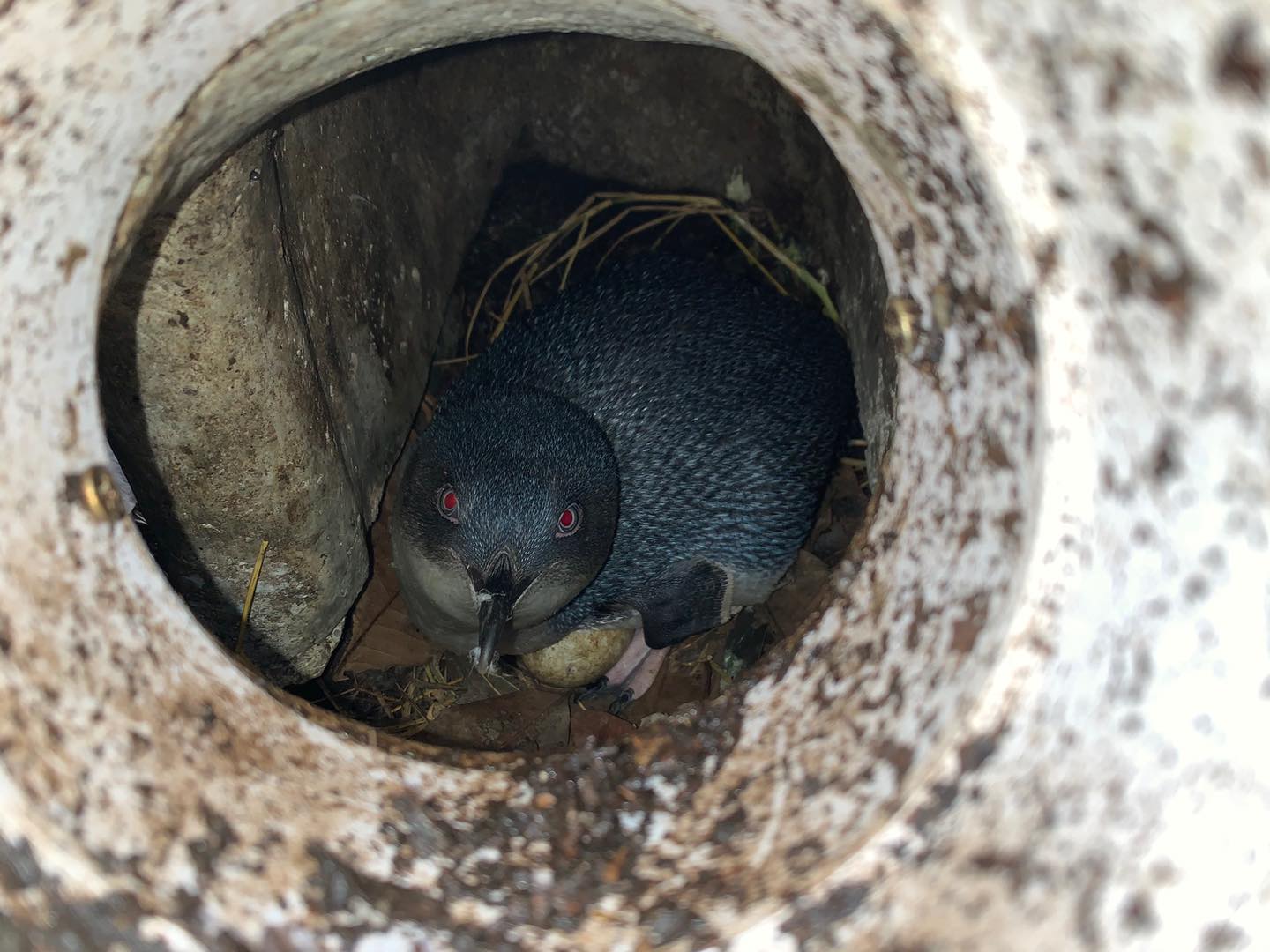
Fix It Sisters photo, March 16, 2021
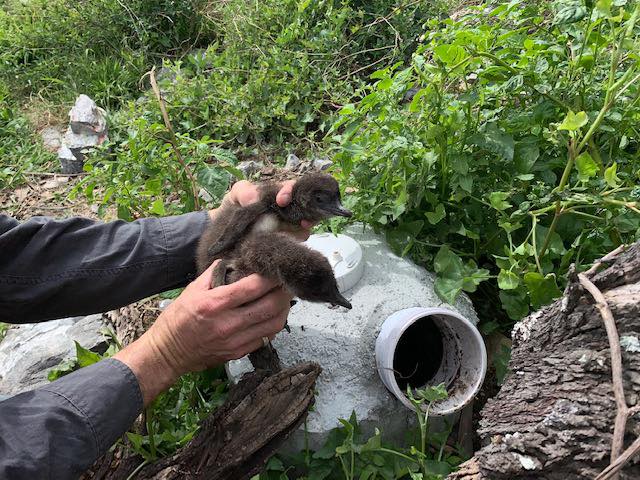
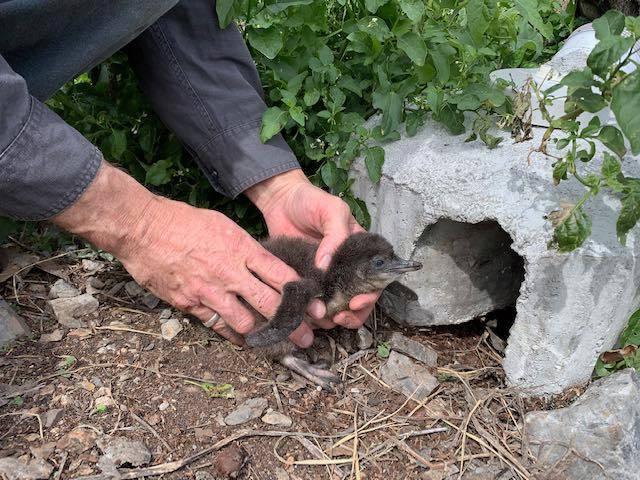
Fix It Sisters photos, March 16, 2021
In 2019 the Eurobodalla Shire Council said:
The Snapper and the Tollgate Islands add scenic beauty to the idyllic seascape of Batemans Bay. Aside from their aesthetic value they hold another surprise which even locals are often unaware – breeding colonies of little penguins.
Eurobodalla Council’s invasive species supervisor Paul Martin said little penguins were the world’s smallest, up to 30cm tall, with an iridescent blue back, snow-white belly, and pink legs and feet.
Paul said the birds could spend days or even weeks at sea before returning to recover and enjoy island time between fishing trips.
“The penguins scrape out their love pads among the low-lying vegetation in early September. Mating, laying eggs, hatching chicks and teaching young penguins the way of the ocean takes until the end of summer,” Paul said.
“Because the eggs and chicks, hidden in vegetation, are so vulnerable to being stepped on, there is a no landing policy on these islands.”
Paul said the penguins local to Batemans Bay were found only on islands, where there were no cats, foxes, dogs or humans.
“About 15 percent of the this population live on Snapper Island, just a stone throw away from the Batemans Bay CBD, so we’re putting a lot of our efforts there,” he said.
“It’s not only the penguins at risk from visiting humans. Sooty oystercatchers – with their black plumage and bright orange bills – also nest on Snapper Island.
Paul said the ‘sooties’ were a threatened species that typically lay two eggs on a flat area just above the high water mark.
“The eggs look exactly like surrounding rocks and are easily stepped on when people walk the tideline around the island,” Paul said.
“The other big risk to both penguins and other shorebirds is entrapment; by plastic pollution like fishing line and drinking bottles or by weeds like kikuyu and turkey rhubarb. These vine-like weeds form loops and birds get entangled and eventually starve to death. That’s not a good way to go in anyone’s book.”
Paul said Council’s sustainability team and Landcare volunteers had commenced work on Snapper Island, clearing environmental weeds and plastic pollution and providing additional nesting opportunities for the little penguins.
“During the summer months, there is nothing better than a kayak paddle around Snapper Island,” Paul said. “However, to ensure our penguins and oystercatchers continue to breed here, Snapper Island is definitely a look but don’t land affair – take your binoculars for a closer view.”
Below runs a video this Council has put together on their Fairy Penguins. Just one of the birds we share our home with!
World Albatross Day Is June 19th
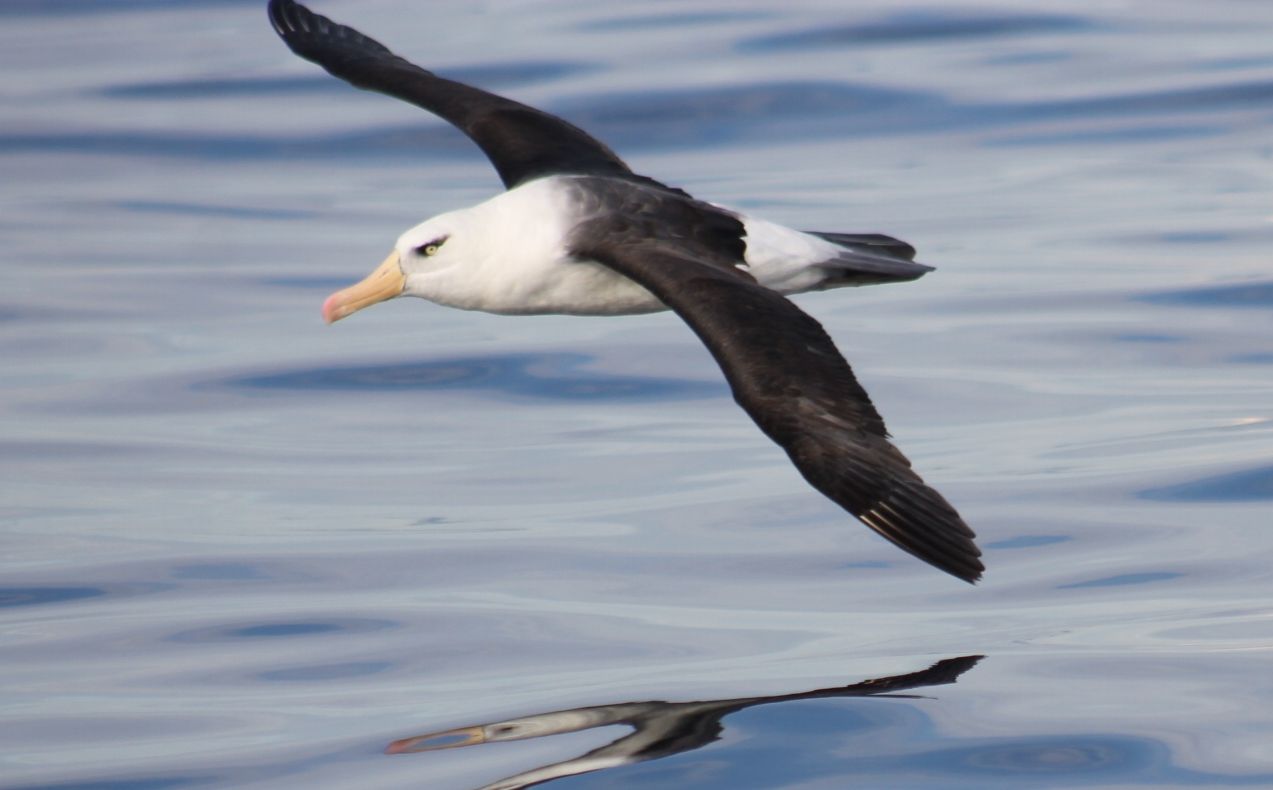
Black-browed Albatross (Thalassarche melanophrys) - pictures by A J Guesdon - taken while off the Pittwater shores
Why Fishing Club Has Been Wound Up.
The "curse” of an offended albatross is held responsible for the end of a deep-sea fishing club at Gosford, New South Wales. It began when the 24 men were fishing out at sea. One of them accidentally hooked a large albatross, the bird which is reputed to bring disaster if harmed as it did to the Ancient Mariner in Coleridge's poem. The bird fought savagely for half an hour before it could be brought aboard to have the hook extracted. Then it battled its way loose, and for three hours refused to leave the launch. Instead it viciously attacked first one and then another of the 24 men. At length it flew away, and the anglers sighed in relief. Their troubles, however, were only beginning.
An hour later, one of the men suffered agonies when a large fish hook became embedded deep in the palm of his hand. As the launch raced for the shore, the hook had to be prised out in an effort to reduce the man's suffering. Soon afterwards the launch grounded on a mudbank, and the men were marooned for three hours until the tide rose. Bad luck continued to dog every outing arranged by the club. Terrific storms prevented several trips. Club membership waned, and all efforts to revive interest failed. At the annual meeting the three remaining members of the original 120 have decided to wind up the club in an effort to avert the albatross “curse”. ALBATROSS “CURSE”. (1936, June 6). Shepparton Advertiser(Vic. : 1914 - 1953), p. 4. Retrieved from http://nla.gov.au/nla.news-article176993041
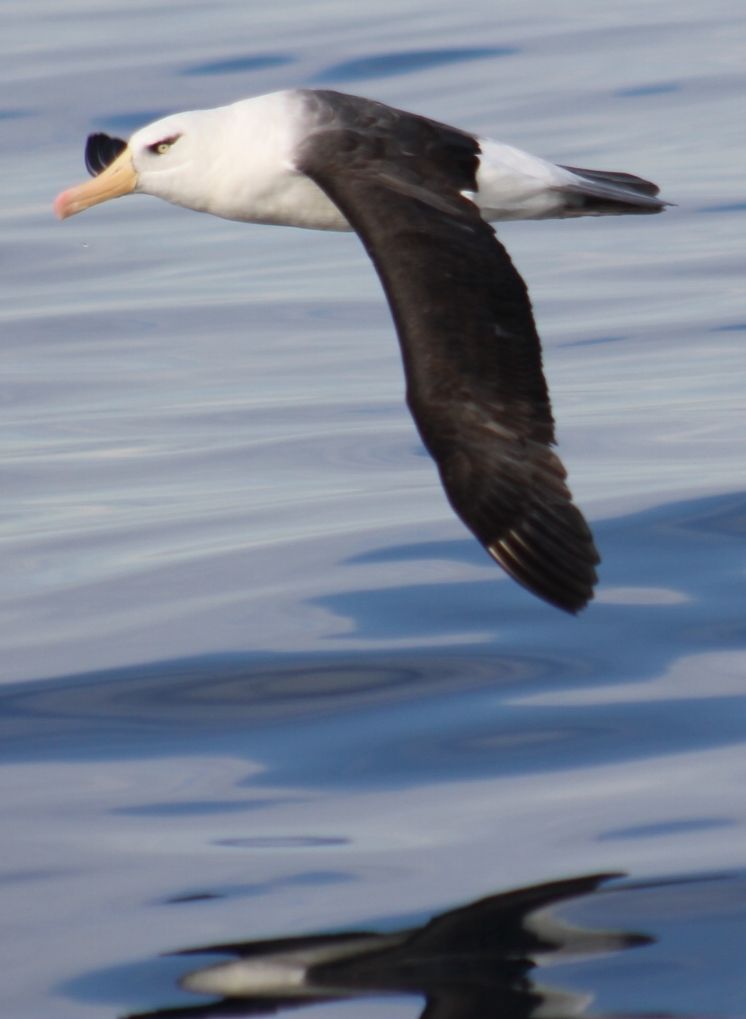 The wise and lucky Black-browed Albatross (Thalassarche melanophrys) - Albatrosses, of the biological family Diomedeidae, are large seabirds allied to the procellariids, storm petrelsand diving petrels in the order Procellariiformes (the tubenoses). They range widely in the Southern Ocean and the North Pacific. They are absent from the North Atlantic, although fossil remains show they once occurred there and occasional vagrants are found. Albatrosses are among the largest of flying birds, and the great albatrosses (genus Diomedea) have the largest wingspans of any extant birds, reaching up to 12 feet (3.7 m). The albatrosses are usually regarded as falling into four genera, but there is disagreement over the number of species.
The wise and lucky Black-browed Albatross (Thalassarche melanophrys) - Albatrosses, of the biological family Diomedeidae, are large seabirds allied to the procellariids, storm petrelsand diving petrels in the order Procellariiformes (the tubenoses). They range widely in the Southern Ocean and the North Pacific. They are absent from the North Atlantic, although fossil remains show they once occurred there and occasional vagrants are found. Albatrosses are among the largest of flying birds, and the great albatrosses (genus Diomedea) have the largest wingspans of any extant birds, reaching up to 12 feet (3.7 m). The albatrosses are usually regarded as falling into four genera, but there is disagreement over the number of species.Albatrosses are highly efficient in the air, using dynamic soaring and slope soaring to cover great distances with little exertion. They feed on squid, fish and krill by either scavenging, surface seizing or diving. Albatrosses are colonial, nesting for the most part on remote oceanic islands, often with several species nesting together. Pair bonds between males and females form over several years, with the use of "ritualised dances", and will last for the life of the pair. A breeding season can take over a year from laying to fledging, with a single egg laid in each breeding attempt. A Laysan albatross, named Wisdom, on Midway Island is recognised as the oldest wild bird in the world; she was first banded in 1956 by Chandler Robbins.
Of the 22 species of albatrosses recognised by the IUCN, all are listed as at some level of concern; 3 species are Critically Endangered, 5 species are Endangered, 7 species are Near Threatened, and 7 species are Vulnerable. Numbers of albatrosses have declined in the past due to harvesting for feathers, but today the albatrosses are threatened by introduced species, such as rats and feral cats that attack eggs, chicks and nesting adults; by pollution; by a serious decline in fish stocks in many regions largely due to overfishing; and bylongline fishing. Longline fisheries pose the greatest threat, as feeding birds are attracted to the bait, become hooked on the lines, and drown. Stakeholders such as governments, conservation organisations and people in the fishing industry are all working toward reducing this bycatch.
In culture Albatrosses have been described as "the most legendary of all birds". An albatross is a central emblem in The Rime of the Ancient Mariner by Samuel Taylor Coleridge; a captive albatross is also a metaphor for the poète maudit in a poem of Charles Baudelaire. It is from the Coleridge poem that the usage of albatross as a metaphor is derived; someone with a burden or obstacle is said to have "an albatross around their neck", the punishment given in the poem to the mariner who killed the albatross. In part due to the poem, there is a widespread myth that (all) sailors believe it disastrous to shoot or harm an albatross; in truth, sailors regularly killed and ate them, e.g., as reported by James Cook in 1772. On the other hand, it has been reported that sailors caught the birds, but supposedly let them free again; the possible reason is that albatrosses were often regarded as the souls of lost sailors, so that killing them was supposedly viewed as bringing bad luck.
Birdwatching
Albatrosses are popular birds for birdwatchers and their colonies are popular destinations for ecotourists. Regular birdwatching trips are taken out of many coastal towns and cities, like Monterey, Kaikoura, Wollongong, Sydney, Port Fairy, Hobart and Cape Town, to see pelagic seabirds. Albatrosses are easily attracted to these sightseeing boats by the deployment of fish oil and burley into the sea. Visits to colonies can be very popular; the northern royal albatross colony at Taiaroa Head in New Zealand attracts 40,000 visitors a year, and more isolated colonies are regular attractions on cruises to subantarctic islands.
The black-browed albatross (Thalassarche melanophris), also known as the black-browed mollymawk, is a large seabird of the albatross family Diomedeidae; it is the most widespread and common member of its family. The origin of the name melanophris comes from two Greek words melas or melanos, meaning "black", and ophris, meaning "eyebrow", referring to dark feathering around the eyes.
The word mollymawk dates to the late 17th century, comes from the Dutch mallemok, which means mal – foolish and mok – gull.
The black-browed albatross is a medium-sized albatross, at 80 to 95 cm (31–37 in) long with a 200 to 240 cm wingspan and an average weight of 2.9 to 4.7 kg (6.4–10.4 lb). They can have a natural lifespan of over 70 years. It has a dark grey saddle and upperwings that contrast with the white rump, and underparts. The underwing is predominantly white with broad, irregular, black margins. It has a dark eyebrow and a yellow-orange bill with a darker reddish-orange tip. Juveniles have dark horn-colored bills with dark tips, and a grey head and collar. They also have dark underwings. The features that distinguish it from other mollymawks (except the closely related Campbell albatross) are the dark eyestripe which gives it its name, a broad black edging to the white underside of its wings, white head and orange bill, tipped darker orange. The Campbell albatross is very similar but with a pale eye. Immature birds are similar to grey-headed albatrosses but the latter have wholly dark bills and more complete dark head markings.
WRITTEN AT SEA, ABOARD THE "ANNE MILNE," OF DUNDEE.
With an eye as sedate as the eye of a sage,
And quick to discern what is passing below ;
With a pinion to cope with the hurricanes rage,
See the Albatross come, with his bosom of snow.
He comes where the bark, o'er the blue wave is bounding,
All music below, and all beauty above,
The emigrant's song, o'er the bright waters sounding,
The sails all a-breast to the breeze which they love !
He comes with the dawn, when the emigrant dreaming.
Is still with the friends of his heart and his home,
He leaves with the sun, when his golden rays streaming
O'er ocean and sky, make it rapture to roam.
He glides with a motion, majestic and grand,
The air never stirr'd by the wave of his wing,
And looks as if, born each bird to command,
As he sits on the ocean, enthroned like a king.
But in doubling the Cape, should the winds in their might,
Make the waves in the strength of their terror appear,
How sublime in the storm is the Albatross flight,
Like the spirit of faith, in the region of fear !
Around and across, o'er the wild breaking wave,
Where the Petrel, in hollows, shoots under his wing,
He soars undismayed, while the hearts of the brave,
Grow faint, as to perishing objects they cling !
The whale bird, in vigour, in habits and size,
Comes nearest the Albatross, but in the gale,
He shrinks from the contest, resigning the skies,
To his mightier rival, the great leathered whale.
J. G.
Original Poetry. (1849, February 24). Bathurst Advocate (NSW : 1848 - 1849), p. 4. Retrieved from http://nla.gov.au/nla.news-article62045380
Logging Continues In The Areas The Swift Parrot Is Migrating To In NSW For Winter Feeding: Pittwater's Swamp Mahogany Tree A Food Source
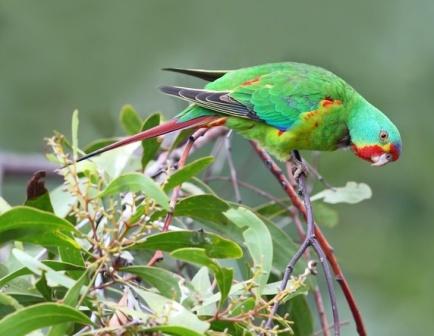 Right now, Swift Parrots are migrating from Tasmania to mainland Australia.
Right now, Swift Parrots are migrating from Tasmania to mainland Australia. Pittwater Natural Heritage Association (PNHA): Mona Vale Dunes Planting Morning
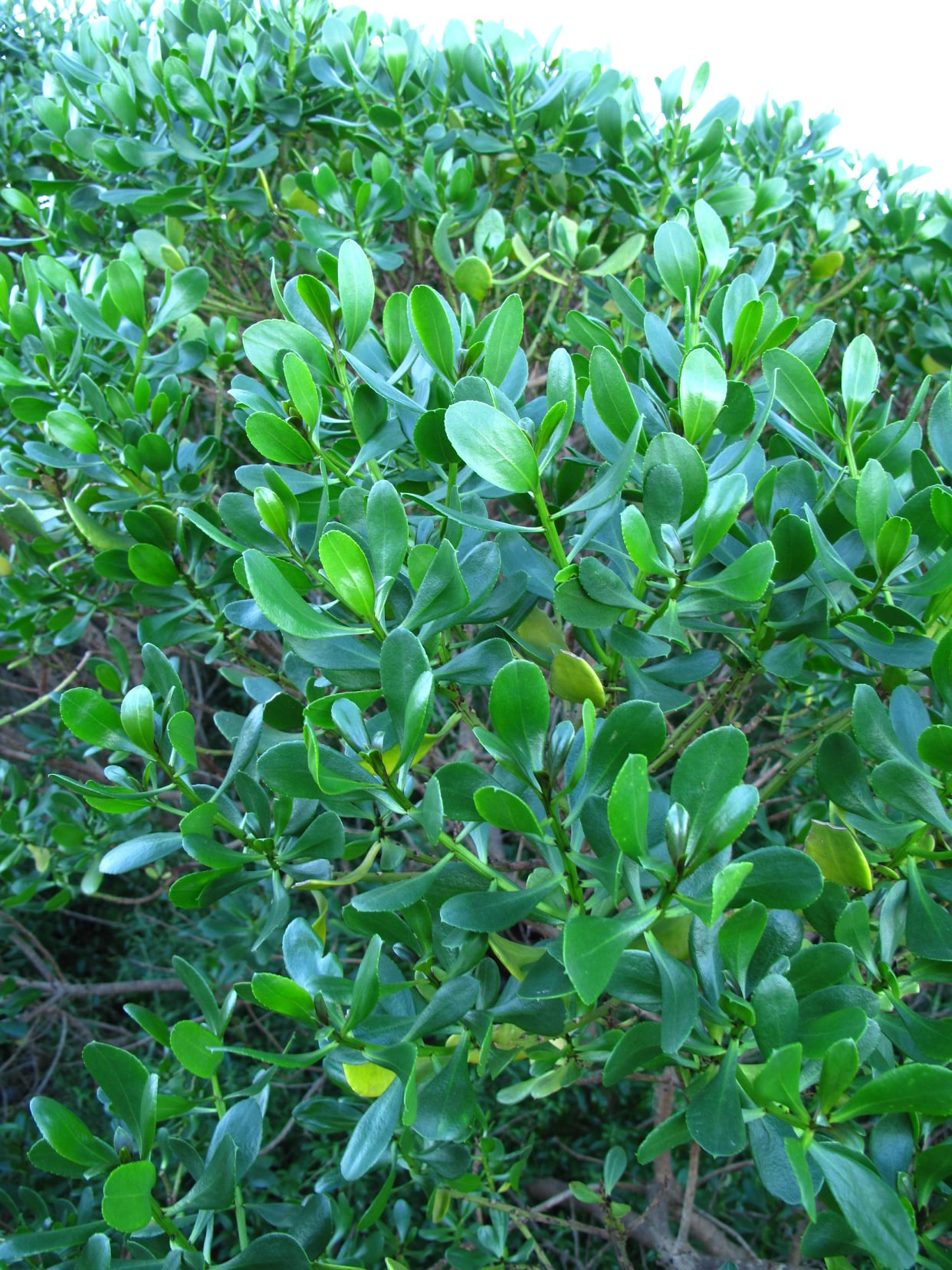
Sydney Wildlife: Registrations For The Next Rescue And Care Course Are Now Open - Commences June 19, 2021
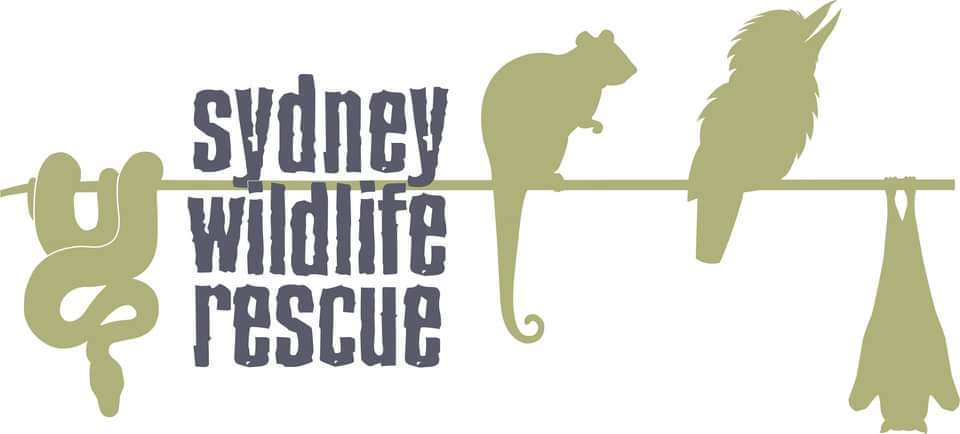
ORRCA News: 2021 Census Day - Sunday June 27
- This is a FREE event for all to join in.
- From sun up to sun down.
- Record all your sightings from your favourite whale watching location using an ORRCA data sheet and sending it into the team at the end of the day.
- Email orrcacensusday@gmail.com for all the details as they unfold.
Powering Ahead With Community Batteries
June 1, 2021
Community-scale batteries are already achievable in Australia, will complement existing household batteries and will allow more solar energy to be stored in our suburbs, analysis from The Australian National University (ANU) shows.
With the move towards community-scale batteries gathering pace across the nation, two new reports from ANU show the best way forward when it comes to their rollout.
The batteries have power capacity of around one megawatt (MW), or enough to power around 100 houses. They help "soak up" solar power generated during the day, improving reliability.
"They have the potential to play an integral role in Australia's transition to a decentralised grid by keeping generated energy close to where it will be used," project lead Dr Marnie Shaw from the ANU Battery Storage and Grid Integration Program (BSGIP) said.
"A key finding of our research is that current regulations could do more to encourage local management of rooftop solar and community battery uptake.
"As such, we propose a tariff that incentivises the use of energy, close to where that energy is produced.
"This 'Local Use of Service tariff' is essentially a price signal to customers, allowing them to benefit monetarily for storing and using energy locally."
The reports examined social aspects that drive the uptake of community batteries - including why people are either willing or unwilling to us them.
"We weighed up potential benefits and drawbacks of community-scale batteries," co-author Dr Hedda Ransan-Cooper said.
"Some risks are relatively easy to overcome, like ensuring safety measures in the event of a fire, while others, such as ensuring the benefits are fairly distributed, are more complicated."
Several community-scale battery projects are already underway across Australia.
The guidelines set out in the ANU reports will be applied in the Melbourne CBD as part of a partnership with the Yarra Energy Foundation and electricity network CitiPower. ANU will also be delivering tailored software for this trial.
"This will enable a trial of community batteries, or 'solar sponges' to be established in the CBD and inner-city suburbs of Melbourne," Dr Shaw said.
"It's clear that complex challenges around transitioning from a centralised to a decentralised energy system can really benefit from engineers and social scientists working together."
The ANU reports are available here and here.
.jpg?timestamp=1622607917640)
Port Kennedy community battery will enable residents to store their excess power. Photo: Western Power.
Turning The Tables - How Table Corals Are Regenerating Reefs
June 1, 2021
New research shows table corals can regenerate coral reef habitats on the Great Barrier Reef decades faster than any other coral type. The research suggests overall reef recovery would slow considerably if table corals declined or disappeared on the Great Barrier Reef. Table corals have been dubbed as "extraordinary ecosystem engineers" -- with new research showing these unique corals can regenerate coral reef habitats on the Great Barrier Reef faster than any other coral type.
The study highlights the importance of tabular Acropora, and is led by the Australian Institute of Marine Science (AIMS) in collaboration with the Great Barrier Reef Marine Park Authority, the University of Queensland and The Nature Conservancy.
AIMS scientist and lead author Dr Juan Carlos Ortiz said the research showed overall reef recovery would slow considerably if table corals declined or disappeared on the Great Barrier Reef.
"Table corals are incredibly fast growing. Habitats in exposed reef slopes recover from disturbances at a rate 14 times higher -- that's more than two decades faster -- when table corals are abundant," he said.
"Their large, flat plate-like shape provides vital protection for large fish in shallow reef areas and serves as a shelter for small fishes, with some species almost entirely dependent on table corals.
"Even after death these corals provide value, as their skeletons are the preferred place for young corals of all types to settle."
Table corals, also known as plate corals, are mostly found in upper reef slopes exposed to wave action, at most mid-shelf and offshore reefs in the Great Barrier Reef.
The study found table corals to have unique combination of characteristics: they provided valuable ecological functions, are among the most sensitive coral types and, most importantly, their role was threatened by a low diversity of species which have this growth form.
The authors suggest protecting table corals could be an additional management focus. Targeting management to a particular coral type based on its ecosystem function -- rather than their risk of extinction alone -- would be ground-breaking in terms of ecosystem-based management.
Great Barrier Reef Marine Park Authority's Assistant Director and study co-author Dr Rachel Pears said table corals were fast growing and sensitive species.
"Table corals are still frequently seen on outer reefs, but their presence shouldn't be taken for granted as they are vulnerable to combined impacts," she said.
"These corals do not handle intensifying thermal stress well, are easily killed by anchor damage, highly susceptible to diseases, and are the preferred meal for crown-of-thorns starfish.
"The good news is there are tangible actions we can take to protect these corals such as targeted crown-of-thorns starfish control and anchoring restrictions."
University of Queensland's scientist and study co-author Professor Peter Mumby said while table corals promoted high rates of recovery, they did not necessarily bring high biodiversity.
"We know table corals do a big service for these reefs, but it's not a silver bullet for recovery," he said.
"Protecting table corals could be part of a suite of actions that look at reef recovery, with other management focused more specifically on protecting biodiversity."
Professor Mumby said it was also important to remember the biggest threat to the reef was climate change, and effective global action to reduce emissions significantly was paramount to protecting coral reefs.
The research drew on decades of data from AIMS long term monitoring program, revealing coral reef habitats took up to 32 years to recover, from 5% coral cover to 30% coral cover, where table corals had not recolonised after disturbances.
These low recovery rates were in stark contrast to reefs where table corals returned and recolonised, with these habitats recovering to 30% coral cover in just seven and a half years.
Given their extraordinary ecosystem function, the research indicated table corals should also be considered in restoration initiatives, like coral enhancement or assisted colonisation.
"Anyone who has been on the mid-shelf or offshore areas of the Great Barrier Reef would have seen table corals," Dr Ortiz said.
"We can think of table corals as the iconic charismatic 'mega coral' of the Great Barrier Reef, just like whales, turtles and dolphins are the Reef's iconic charismatic megafauna."
Juan C. Ortiz, Rachel J. Pears, Roger Beeden, Jen Dryden, Nicholas H. Wolff, Maria del C. Gomez Cabrera, Peter J Mumby. Important ecosystem function, low redundancy and high vulnerability: The trifecta argument for protecting the Great Barrier Reef's tabular Acropora. Conservation Letters, 2021 DOI: 10.1111/conl.12817
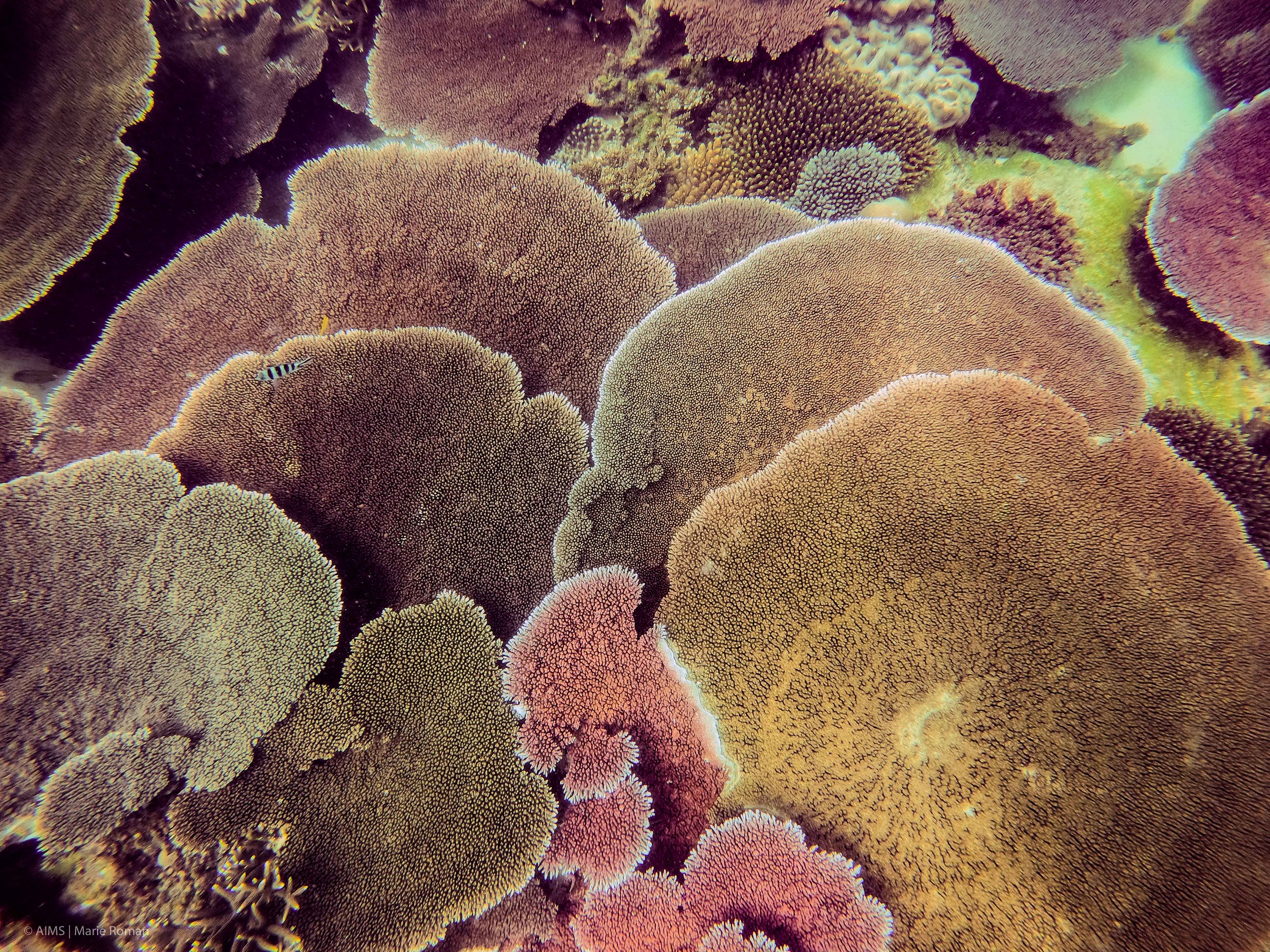
Image copyright: Australian Institute of Marine Science (AIMS)
Beautiful, rare 'purple cauliflower' coral off NSW coast may be extinct within 10 years
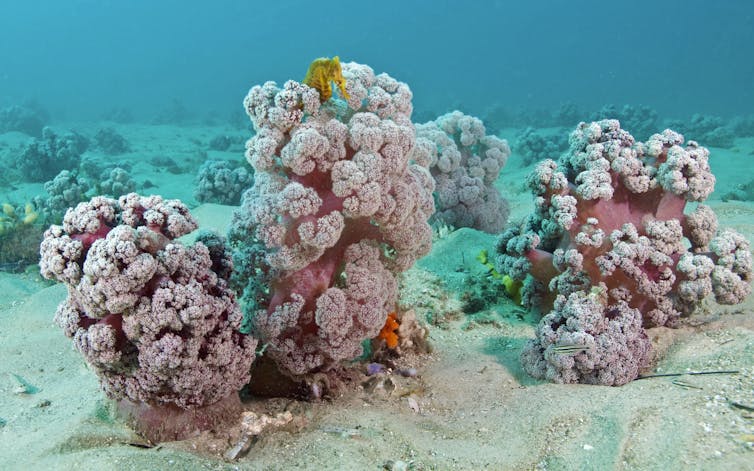
When we think of Australia’s threatened corals, the Great Barrier Reef probably springs to mind. But elsewhere, coral species are also struggling – including a rare type known as “cauliflower soft coral” which is, sadly, on the brink of extinction.
This species, Dendronephthya australis, looks like a purple cauliflower due to its pink-lilac stems and branches, crowned with white polyps.
The coral primarily occurs at only a few sites in Port Stephens, New South Wales, and is a magnet for divers and underwater photographers. But sand movements, boating and fishing have reduced the species’ population dramatically.
Recent flooding in NSW compounded the problem – in fact, it may have reduced the remaining coral population by 90%. Our recent research found cauliflower soft coral may become extinct in the next decade unless we urgently protect and restore it.
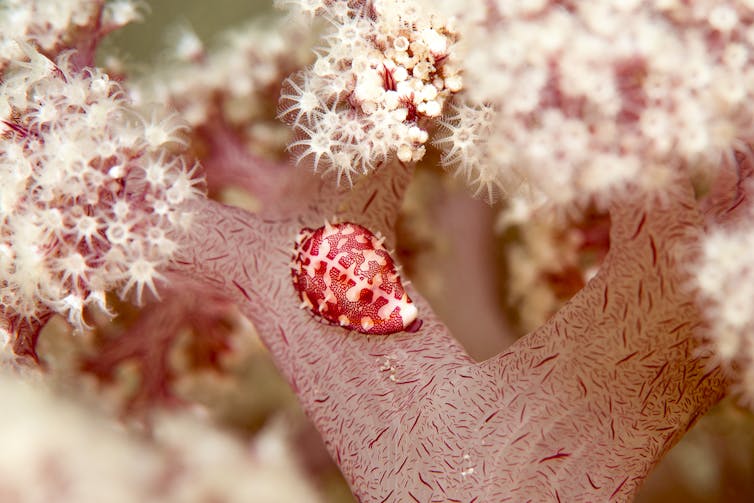
Lilac Underwater Gardens
Cauliflower soft corals are predominantly found in estuarine environments on sandy seabeds with high current flow. They rely on tidal currents to transport plankton on which they feed.
The species is most commonly found in the Port Stephens estuary, about 200 kilometres north of Sydney. It’s also found in the Brisbane Water estuary in NSW, and has been found sporadically in other locations south to Jervis Bay.
The coral colonies form aggregations or “gardens”. At Port Stephens, these gardens are the preferred habitat for the endangered White’s seahorse and protected species of pipefish. They also support juvenile Australasian snapper, an important species for commercial and recreational fishers.
In recent months, the cauliflower soft coral has been listed as endangered in NSW and nationally.
An Alarming Decline
Scientists first mapped the distribution of the cauliflower soft coral in 2011. They found none of the biggest colonies in the Port Stephens estuary were protected by “no take” zones – areas where fishing and other extractive activities are banned.
In research in 2016, we found a sharp decline in the extent and distribution of cauliflower soft coral.
Our recent study examined the problem in more detail. It involved mapping the southern shoreline of Port Stephens, using an underwater camera towed by a vessel.
We found the cauliflower soft coral in the Port Stephens estuary has declined by almost 70% over just eight years. It now occurs over 9,300 square metres – down from 28,600 square metres in 2011.
Our subsequent modelling sought to identify what was driving the corals’ decline. We found a correlation between coral loss and sand movements over the last decade.
Human changes to shorelines, such as marina developments, have changed the dynamic of currents across the estuary. For example, previous research found a large influx of sand from the western end of Shoal Bay smothered cauliflower soft coral colonies at two nearby locations. As of 2018, those colonies had disappeared completely.
While diving as part of the project, we identified other causes of damage to the coral. Dropped boat anchors and the installation of moorings had damaged some colonies. Others were injured after becoming entangled in fishing line.
It is possible that disease, and pollution or other water quality issues, may also be contributing to the species’ decline.
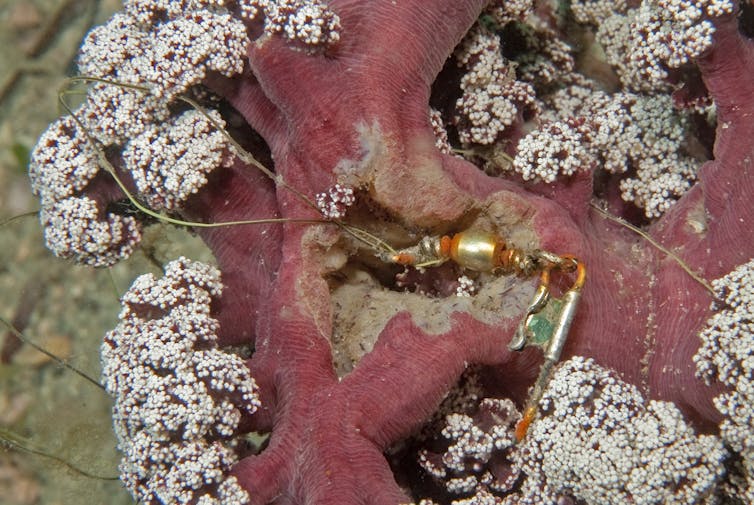
Then The Floods Hit
Some 18 months after our most recent mapping, cauliflower soft corals suffered yet another blow. Major flooding in NSW in March this year caused a massive amount of fresh water to discharge from the Karuah River into the Port Stephens estuary, where sea water is dominant. Fresh water can kill cauliflower soft corals.
Following the floods, we conducted exploratory dives at locations where the cauliflower soft corals had been thriving at Port Stephens. We found much of the coral had disintegrated and disappeared. In fact, we estimated as much as 90% of the remaining cauliflower soft coral population was gone.
We plan to remap the estuary in the coming weeks, and feel confident our initial estimates will be close to the mark. If so, this means less than 5% of the species area mapped in 2011 now remains.
The floods also devastated kelp forests and other canopy-forming habitats in the estuary. Further work by scientists at the NSW Department of Primary Industries is underway to quantify these losses and monitor the recovery.
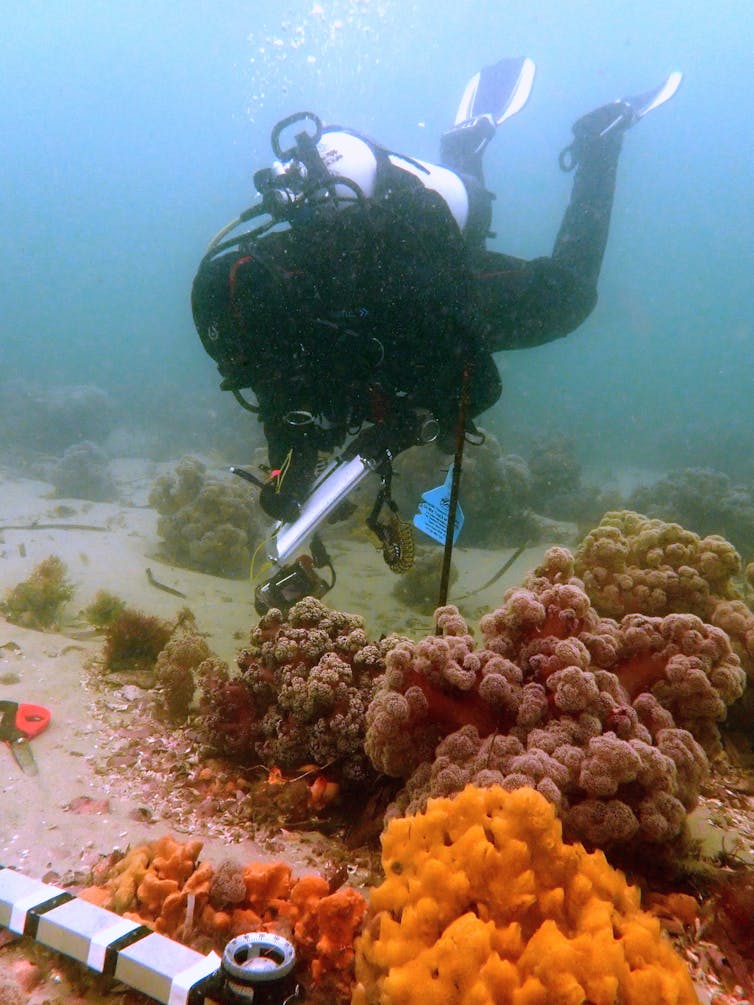
Urgent Work Required
The cauliflower soft coral urgently needs protecting. This will require ongoing, coordinated research and management.
Clearly, action must be taken to reduce threats such as anchoring, fishing, and development that may magnify sand movement.
Best-practice rehabilitation is also needed. This may involve rearing the coral off-site and transplanting it into suitable habitat. Such trials at Port Stephens have shown promising signs.
Human activities are causing species loss at an alarming rate. We must do everything in our power to prevent the extinction of the cauliflower soft coral, and other threatened species, to preserve the balance of nature and its ecosystems.
Read more: Australia's threatened species plan sends in the ambulances but ignores glaring dangers ![]()
Meryl Larkin, PhD Candidate, Southern Cross University; David Harasti, Adjunct assistant professor, Southern Cross University; Steve Smith, Professor of Marine Science, National Marine Science Centre, Southern Cross University, and Tom R Davis, Research Scientist - Marine Climate Change
This article is republished from The Conversation under a Creative Commons license. Read the original article.
The APVMA’s Response To The Current Mouse Plague
- PER90579, issued 27 January 2021 to Cotton Australia Ltd for use on cotton (zinc phosphide).
- PER90846, issued 6 April 2021 to NSW DPI for use in fallow situations prior to sowing grain, legume, canola, safflower and nut crops, and use on pasture (zinc phosphide).
- PER90793, issued 9 April 2021 to Hoyle Trading Trust for use on grain, legume, canola, safflower and nut crops and use on pasture (zinc phosphide).
- PER90799, issued 7 May 2021 to Grain Producers Australia Ltd for use on grain, legume, canola, safflower and nut crops and use on pasture (zinc phosphide).
- PER91133, issued 26 May 2021 to Animal Control Technologies (Australia) Pty Ltd for use on grain crops, legume crops, canola, safflower, nut crops and pasture (zinc phosphide).
Hundreds Of Farmers Get In Early To Secure Free Mice-Killing Chemical
EPA Asks The Community To Use Pesticides Correctly When Baiting Mice
Mouse Plague Fuels Bird Deaths: Rodenticides Blamed For Avian Mortalities
Mouse Plague In Queensland And New South Wales: CSIRO
- Existing populations are increasing because they have access to good food and shelter.
- The cooler weather encourages mice to find shelter inside homes, making them more likely to be seen.
- Mouse numbers are in abundance following the breeding season and juvenile mice disperse to find other places to live.
- Try to reduce alternate food sources for mice and introduce livestock to eat excess food in the fields.
- Bait regularly and coordinate baiting with other farmers to avoid reinvasion. Bait on as broad a scale as possible.
- Lay bait when food source in the paddocks is at the lowest level, this will give mice the best chance to find the bait.
- Apply bait while sowing crops.
- Deny mice access to food sources. Clean up left-over pet food in bowls, bird aviaries and chicken runs.
- Keep grass mown and clean up around the garden. Remove anything that mice can shelter in. Move piles of wood and timber away from your house.
- Use snap traps, which takes away the need for chemicals.
Mouse plague: bromadiolone will obliterate mice, but it'll poison eagles, snakes and owls, too
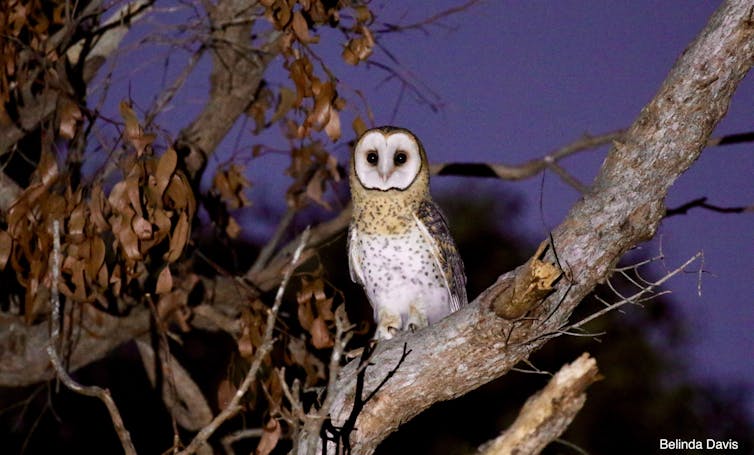
It’s the smell that hits you first. The scent of urine and decomposing bodies. Then you notice other signs: scuttles and squeaks, small dead bodies leaking blood, tails sticking out of hubcaps.
If you’ve lived through a mouse plague, you’ve seen this, and smelled the stench of mice dying of poison baits.
As a desperate measure to help combat the mouse plague devastating rural communities across New South Wales, the state government yesterday secured 5,000 litres of bromadiolone. This is a bait that’s usually illegal to roll out at the proposed scale.
This is a bad idea. While bromadiolone effectively kills mice, it also travels up the food chain to poison predators who eat the mice, and other species. And these predators, from wedge-tailed eagles to goannas, are coming out in droves to feast on their abundant prey.
When Your Prey Is Everywhere
Animal plagues in Australia are fuelled by the “boom and bust” of rainfall.
We have natural, flood-driven population explosions of the native long-haired rat, with accompanying booms of letter-winged kites, their predator. We also have locust plagues when the conditions are right, leading to antechinus or mice plagues which eat the locusts.
Since at least the late 1800s, we’ve had terrible plagues of the introduced house mouse (Mus musculus). But rarely has it been this bad, with conditions currently seeming worse than the last plague in 2011, which caused over A$200 million in crop damage alone.
High numbers of birds of prey — nankeen kestrels, black-shouldered kites and barn owls — are often reported feasting on plague mice.
Snakes, goannas, native carnivores such as quolls, and feral cats and foxes, also take advantage of the abundant food. Pets, especially cats and some dogs, are highly likely to consume mice under these conditions, too.
Poisoning The Food Web
Laying out poison baits is one way people try to end mouse infestations and plagues. So-called “anticoagulant rodenticides” are divided into first and second generations, based on when they were first synthesised and the differences in potency.

Second generation anticoagulant rodenticides have higher toxicities than first generation, and are lethal after a single feed. First generation rodenticides, on the other hand, require rodents to feed on them for consecutive days to be lethal.
But mouse-eating predators are highly exposed to second generation rodenticides. For most animal species, the lethal doses of rodenticide aren’t yet known.
A scientific review from 2018 documented the poisoning of 31 bird, five mammal and one reptile species. Second generation aniticoaugulant rodenticides were implicated in the death of these animals.
Our research from 2020 found urban reptiles are highly exposed to second generation rodenticides, too. This includes mouse-eating snakes, called dugites, which had up to five different rodent poisons in them.
We also found poisons in frog-eating tiger snakes, and in omnivorous bobtail skinks which eat fruit, vegetation and snails. This is even more concerning because it shows how second generation rodenticides can saturate the entire foodweb, affecting everything from slugs to fish.
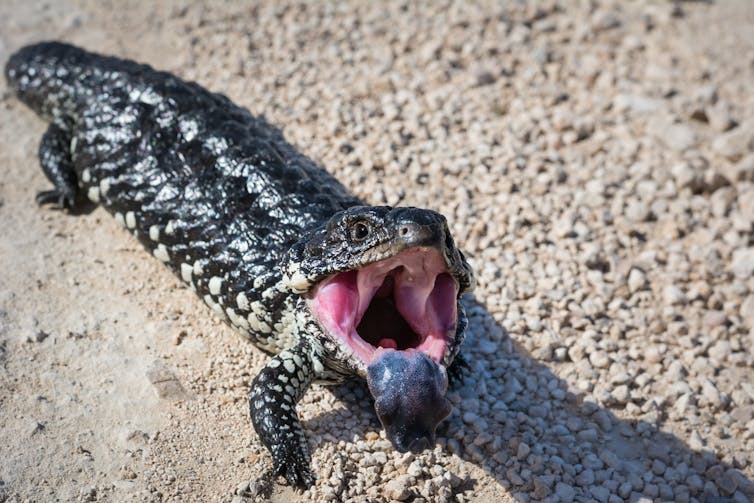
Bromadiolone Is Particularly Dangerous, Even To Humans
The NSW government secured bromadiolone baits as part of its $50 million mouse plague support package for regional communities.
Five thousand litres of the poison can treat around 95 tonnes of grain, and the government will provide it for free to primary producers once federal authorities approve its use.
Bromadiolone is usually restricted to use in and around buildings. But given the widespread impacts on wildlife, using bromadiolone at the proposed scale will do more harm than good.
Past research on bromadiolone has shown residues persist for up to 135 days in the carcasses of voles (another rodent species). In international studies, bromadiolone has been found in the livers of a host of birds of prey, including a range of owl species, red kites, sparrowhawks and golden eagles.
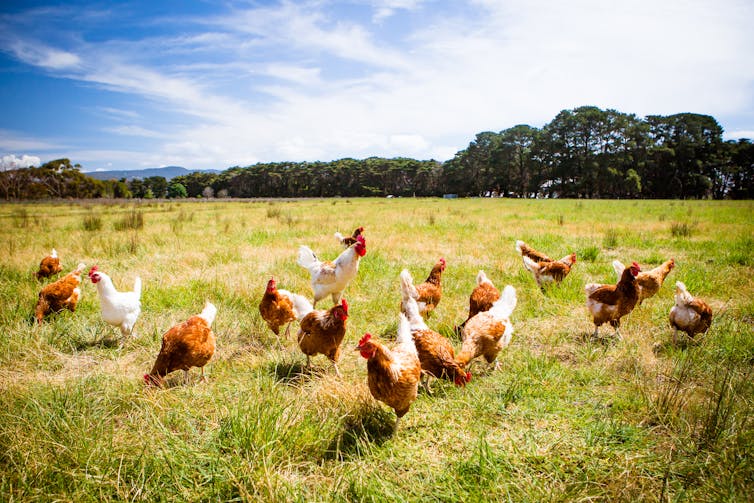
And it’s not just a problem for wildlife, humans are also at risk of exposure. For example, we can get exposed from eating eggs from chickens that feed on poisoned mice, or more directly from eating other animals that may have ingested poisoned mice.
A 2013 study looked at chicken eggs for human consumption, and detected bromadiolone in eggs between five and 14 days after the chicken ingested the poison. It’s not yet clear how many of these eggs we’d have to eat for us to get sick.
So What Are The Alternatives?
There are highly effective first generation rodenticides that provide viable solutions for managing mouse plagues. They may take a little longer to kill mice, but the upshot is they don’t stick around in the environment. A 2020 study found house mice in Perth didn’t have genetic resistance to first generation rodenticides, which suggests they’re effectively lethal.
Another approach has been to use zinc phosphide, a poison which is unlikely to secondarily poison other animals that eat the poisoned mice. However, zinc phosphide is still extremely toxic and will kill sheep, cows, pets and even humans if directly eaten.
Rolling out double-strength zinc phosphide may be the lesser of the evils in causing secondary poisoning, but only if used very carefully.
And another way to help control the mouse plague is to limit food resources for mice on farms. Farmers can minimise grain on ground, and Australia should invest in research for grain storage facilities that are less permeable to mice.
Mouse plagues are a regular cycle in Australia. Natural predators not only help create healthy, natural ecosystems, but also they help with mouse control. Second generation rodenticides will only destroy and weaken the predator populations we need to help us combat the next plague.![]()
Robert Davis, Senior Lecturer in Wildlife Ecology, Edith Cowan University; Bill Bateman, Associate professor, Curtin University; Damian Lettoof, PhD Candidate, Curtin University; Maggie J. Watson, Lecturer in Ornithology, Ecology, Conservation and Parasitology, Charles Sturt University, and Michael Lohr, Adjunct Lecturer, Edith Cowan University
This article is republished from The Conversation under a Creative Commons license. Read the original article.
Sluggish Rehabilitation Rate At Upper Hunter Coal Mines Threatens Jobs And Environment
- Mount Arthur Independent Environmental Audit 2020 available here.
- Muswellbrook coal mine Independent Environmental Audit 2019 available here.
- Bengalla Independent Environmental Audit 2019 available here.
- Mount Pleasant Independent Environmental Audit 2020 available here.
Western Downs Farmers Call On Shell To Get Out Of Gas Following Dutch Ruling
ARENA Under Threat (Again): Federal Budget Against The Climate - Australian Conservation Foundation Analysis
- The government committed $100 million over four years to ocean sustainability initiatives, which ACF welcomes.
- $4.4 million over four years for a pilot biodiversity credit trading platform to encourage farmers to invest in biodiversity protection. ACF tentatively welcomes this but it’s critical that the program delivers genuine, long-term gains to biodiversity.
- $29.1m to protect native species from feral and invasive pests, but the budget projects a decline of 55% for on-ground biodiversity work from 2013 to 2025.
- $209.7m over four years was allocated to a new Australian Climate Service based in Townsville, Queensland that will bring together the Bureau of Meteorology, Geoscience Australia, CSIRO and Australian Bureau of Statistics to “anticipate and prepare for more extreme weather events”.
- $639m for “low emissions international technology partnerships” which may include developing a carbon offset scheme in the Indo-Pacific.
- They also allocated $302 million to major fuel refinery infrastructure upgrades to help bring forward, from 2027 to 2024, better quality fuels, including ultra-low sulfur levels.
- The budget papers include a commitment to the “full” rehabilitation of the former Rum Jungle uranium mine site near Batchelor, south of Darwin over the coming 11 years, but the funding amount was not revealed.
- Australian Nuclear Science and Technology Organisation was allocated $59.8 million to ‘support the interim storage of intermediate level solid radioactive waste’. This funding aligns with the ACF’s call for Intermediary LW be kept in extended interim storage at ANSTO pending the outcome of a transparent review into the full range of long term management options.
- Hidden in the budget was $600 million for government-owned Snowy Hydro Limited to construct a 660 MW gas-fired power station at Kurri Kurri in NSW.
- Also not clear in the budget but revealed last week, two refineries will receive up to $2.047 billion to minimise the downside price risks of production by the government guaranteeing to step in and set a price.
- $29.3 million over four years to implement fast-tracked processes for the environmental assessments of development projects under the Environment Protection and Biodiversity Conservation Act which have not yet been agreed to by the parliament, and that ACF strongly opposes.
- A total of $58.6m was allocated to the gas industry (including $38.7m directly to gas infrastructure) including:
- a one-off grant of up to $30 million for billionaire Andrew Forrest's firm Australian Industrial Power to back its 635MW gas import and dual gas and hydrogen fuel processing project at Port Kembla in New South Wales;
- gas storage facilities at Golden Beach and Iona in Victoria;
- the expansion of the South West Victorian Pipeline;
- the Wallumbilla Gas Supply Hub in Queensland ($6.2 million over two years);
- a pipeline pre-feasibility study for the North Bowen Basin in Queensland.
- $539.2m was allocated to five hydrogen hubs ($275.5m) and carbon capture and storage ($263.7m).
- $217m to upgrade roads in the Northern Territory linked to gas in and around the Beetaloo Basin.
- $279.9m over a decade to establish a “below baseline crediting mechanism” to encourage major polluters to reduce their energy consumption and emissions. How this mechanism works in practice will be key to it actually reducing emissions.
- $100 million over four years to advance the flawed and contested plan for a Nuclear Waste Storage Facility at Kimba in rural South Australia.
- The budget revealed the fuel tax credit subsidy, which allows multinational mining companies like Rio Tinto, BHP and Glencore to pay zero tax on their off-road diesel use, will cost Australians $35.5 billion across the forward estimates.
Banks Must Respond To IEA Warning On Gas Financing
EPA Fines Liddell Power Station Operator For Alleged Air Pollution
New Plan To Revitalise NSW's Oldest Park By Installing Mountain Bike Trails
- Royal National Park, Heathcote National Park, Garawarra State Conservation Area Draft Planning Considerations
- Royal National Park, Heathcote National Park and Garawarra State Conservation Area Draft Plan of Management
- Royal National Park, Heathcote National Park and Garawarra State Conservation Area Draft Mountain Biking Plan
Pumped Hydro Plan Will Help To Maintain Lithgow’s Place As An Energy Hub
- Big battery. Neon is building a big battery on the site of the decommissioned Wallerawang power station site. [1]
- Eco-precinct. An eco-precinct is also planned for the Wallerawang power station site. [2]
- Bus manufacturing. The Western Sydney Regional Organisation of Councils is lobbying to establish an electric bus manufacturing plant in Lithgow. [3]
- Pumped hydro. Energy Australia announces plans for pumped hydro. [4]
EnergyAustralia Excited About Pumped Hydro Possibility Near Mt Piper
Previously: Mt Piper Power Station Energy Recovery Feasibility
Hundreds of Australian lizard species are barely known to science. Many may face extinction

Most of the incredible diversity of life on Earth is yet to be discovered and documented. In some groups of organisms – terrestrial arthropods such as spiders and scorpions, marine invertebrates such as sponges and molluscs, and others – scientists have described fewer than 20% of species.
Even our knowledge of more familiar creatures such as fish and reptiles is far from complete. In our new research, we studied 1,034 known species of Australian lizards and snakes and found we know so little about 164 of them that not even the experts know whether they are fully described or not. Of the remaining 870, almost a third probably need some work to be described properly.
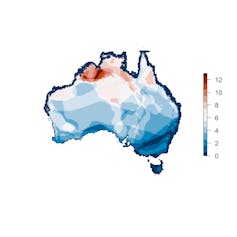
Documenting and naming what species are out there – the work of taxonomists – is crucial for conservation, but it can be difficult for researchers to decide where to focus their efforts. Alongside our lizard research, we have developed a new “return on investment” approach to identify priority species for our efforts.
We identified several hotspots across Australia where research is likely to be rewarded. More broadly, our approach can help target taxonomic research for conservation worldwide.
Why We Need To Look At Species More Closely
As more and more species are threatened by land clearing, climate change and other human activities, our research highlights that we are losing even more biodiversity than we know.
Conservation often relies on species-level assessments such as those conducted by the International Union for Conservation of Nature (IUCN) Red List, which lists threatened species. Although new species are being discovered all the time, a key problem is that already named “species” may harbour multiple undocumented and unnamed species. This hidden diversity remains invisible to conservation assessment.
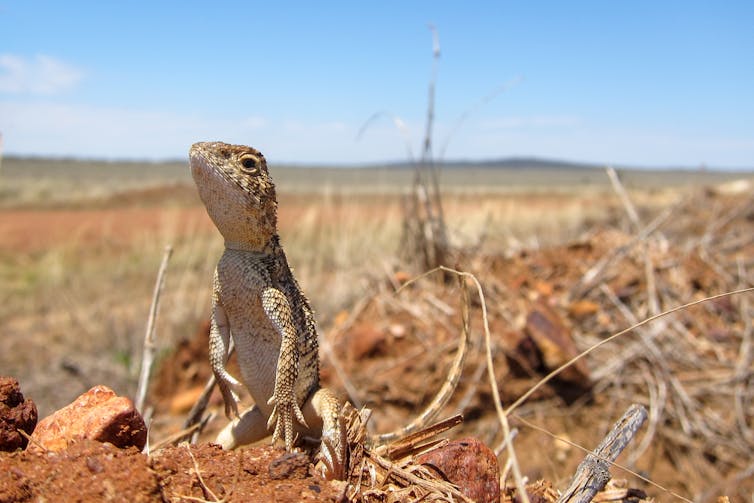
One such example are the Grassland Earless Dragons (Tympanocryptis spp.) found in the temperate native grasslands of south-eastern Australia. These small secretive lizards were grouped within a single species (Tympanocryptis pinguicolla) and listed as Endangered on the IUCN Red List.
But recent taxonomic research split this single species into four, each occurring in an isolated region of grasslands. One of these new species may represent the first extinction of a reptile on mainland Australia and the other three have a high probability of being threatened.
Read more: Why we're not giving up the search for mainland Australia's 'first extinct lizard'
Scientists call documenting and describing species “taxonomy”. Our research shows the importance of prioritising taxonomy in the effort to conserve and protect species.
Taxonomists At Work
Many government agencies do take some account of groups smaller than species in their conservation efforts, such as distinct populations. But these are often ambiguously defined and lack formal recognition, so they are not widely used. That’s where taxonomists come in, to identify species and describe them fully.
Our new research was a collaboration of 30 taxonomists and systematists, who teamed up to find a good way of working out which species should be a priority for taxonomic research for conservation outcomes. This new approach compares the amount of work needed with the likelihood of finding previously unknown species that are at risk of extinction.

The research team, who are experts on the taxonomy and systematics of Australia’s reptiles, implemented this new approach on Australian lizards and snakes. This group of reptiles is ideal as a test case because Australia is a global hotspot of lizard diversity – and we also have a strong community of taxonomic experts.
Australia’s Lizards And Snakes
Of the 1,034 Australian lizard and snake species, we were able to assess whether 870 of them may contain undescribed species. This means we know so little about the remaining 164 species that even the experts could not make an informed opinion on whether they contain hidden diversity. There is so much still to learn!
Of the 870 species experts could assess, they determined 282 probably or definitely needed more taxonomic research. Mapping the distributions of these species indicated hotspot regions for this taxonomic research, including the Kimberley, the Tanami Desert region, western Victoria and offshore islands (such as Tasmania, Lord Howe and Norfolk Islands). Some areas in the Kimberley region had more than 60 species that need further taxonomic research.
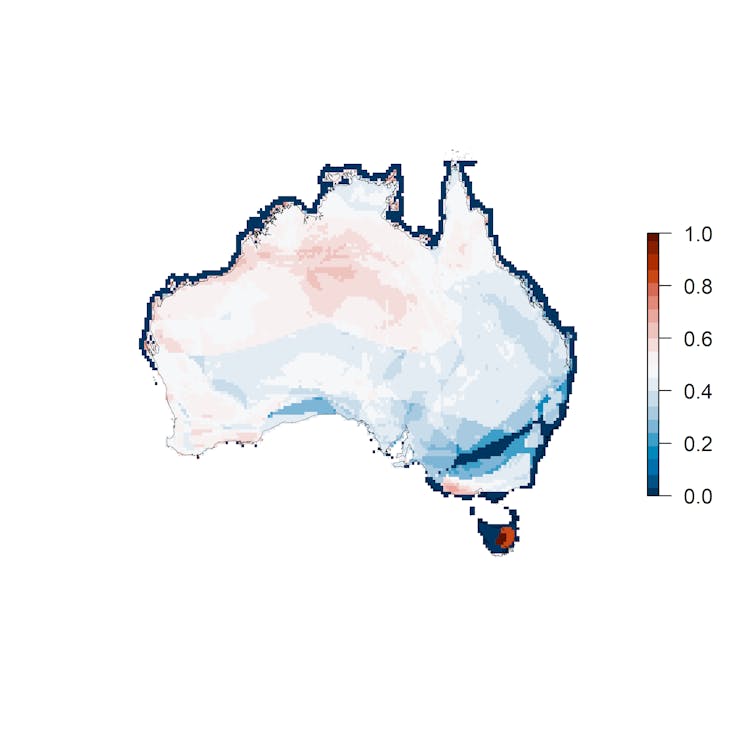
We found 17.6% of the 282 species that need more taxonomic research contained undescribed species that would probably be of conservation concern, and 24 had a high probability of being threatened with extinction. Taxonomists know that there are undescribed species because there is some data available already but the description of these species – the process of defining and naming – has not been done.
These high-priority species belong to a range of families including geckos, skinks and dragons found across Australia.
The high number of undescribed species, especially those with significant likelihood of being endangered, was a shock to even the experts. The IUCN currently estimates only 6.3% of Australian lizards and snakes require taxonomic revision, but this is obviously a significant underestimate.
A Race Against Extinction
Beyond lizards, there is a huge backlog of species awaiting description.
Recent projects have used genetic analyses to discover unknown species, including a $180 million global BIOSCAN effort aiming to identify millions of new species. However, genetics is only a first step in the formal recognition of species.
The taxonomic process of documenting, describing and naming species requires multiple further steps. These steps include a comprehensive diagnostic assessment using a combination of evidence, such as genetics and morphology, to uniquely distinguish each species from another. This process requires a high level of familiarity and scholarship of the group in question.

Among the Australian lizards and snakes alone, there is a backlog of 59 undescribed species for which only the final elements of taxonomic research are awaiting completion.
To work through these taxonomic backlogs – let alone species that are so far entirely unknown – resources need to be invested in taxonomy, including research funding and increased provision of viable career paths.
Without taxonomic research, the conservation assessment of these undocumented species will not proceed. There are untold numbers of species needing taxonomic research that are already under threat of extinction. If we don’t hurry, they may go extinct before we even know they exist.![]()
Jane Melville, Senior Curator, Terrestrial Vertebrates, Museums Victoria and Reid Tingley, Lecturer, Monash University
This article is republished from The Conversation under a Creative Commons license. Read the original article.
About 500,000 Australian species are undiscovered – and scientists are on a 25-year mission to finish the job
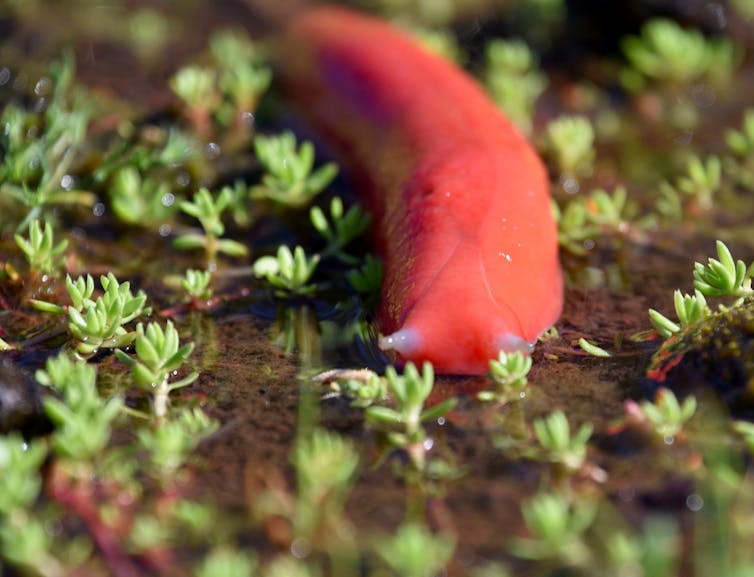
Here are two quiz questions for you. How many species of animals, plants, fungi, fish, insects and other organisms live in Australia? And how many of these have been discovered and named?
To the first, the answer is we don’t really know. But the best guess of taxonomists – the scientists who discover, name, classify and document species – is that Australia’s lands, rivers, coasts and oceans probably house more than 700,000 distinct species.
On the second, taxonomists estimate almost 200,000 species have been scientifically named since Europeans first began exploring, collecting and classifying Australia’s remarkable fauna and flora.
Together, these estimates are disturbing. After more than 300 years of effort, scientists have documented fewer than one-third of Australia’s species. The remaining 70% are unknown, and essentially invisible, to science.
Taxonomists in Australia name an average 1,000 new species each year. At that rate, it will take at least 400 years to complete even a first-pass stocktake of Australia’s biodiversity.
This poor knowledge is a serious threat to Australia’s environment. And a first-of-its kind report released today shows it’s also a huge missed economic opportunity. That’s why today, Australia’s taxonomists are calling on governments, industry and the community to support an important mission: discovering and documenting all Australian species within 25 years.
Australia: A Biodiversity Hotspot
Biologically, Australia is one of the richest and most diverse nations on Earth – between 7% and 10% of all species on Earth occur here. It also has among the world’s highest rates of species discovery. But our understanding of biodiversity is still very, very incomplete.
Of course, First Nations peoples discovered, named and classified many species within their knowledge systems long before Europeans arrived. But we have no ready way yet to compare their knowledge with Western taxonomy.
Finding new species in Australia is not hard - there are almost certainly unnamed species of insects, spiders, mites and fungi in your backyard. Any time you take a bush holiday you’ll drive past hundreds of undiscovered species. The problem is recognising the species as new and finding the time and resources to deal with them all.
Taxonomists describe and name new species only after very careful due diligence. Every specimen must be compared with all known named species and with close relatives to ensure it is truly a new species. This often involves detailed microscopic studies and gene sequencing.
More fieldwork is often needed to collect specimens and study other species. Specimens in museums and herbaria all over the world sometimes need to be checked. After a great deal of work, new species are described in scientific papers for others to assess and review.
So why do so many species remain undiscovered? One reason is a shortage of taxonomists trained to the level needed. Another is that technologies to substantially speed up the task have only been developed in the past decade or so. And both these, of course, need appropriate levels of funding.
Of course, some groups of organisms are better known than others. In general, noticeable species – mammals, birds, plants, butterflies and the like – are fairly well documented. Most less noticeable groups - many insects, fungi, mites, spiders and marine invertebrates - remain poorly known. But even inconspicuous species are important.
Fungi, for example, are essential for maintaining our natural ecosystems and agriculture. They fertilise soils, control pests, break down litter and recycle nutrients. Without fungi, the world would literally grind to a halt. Yet, more than 90% of Australian fungi are believed to be unknown.
Read more: How we discovered a hidden world of fungi inside the world’s biggest seed bank
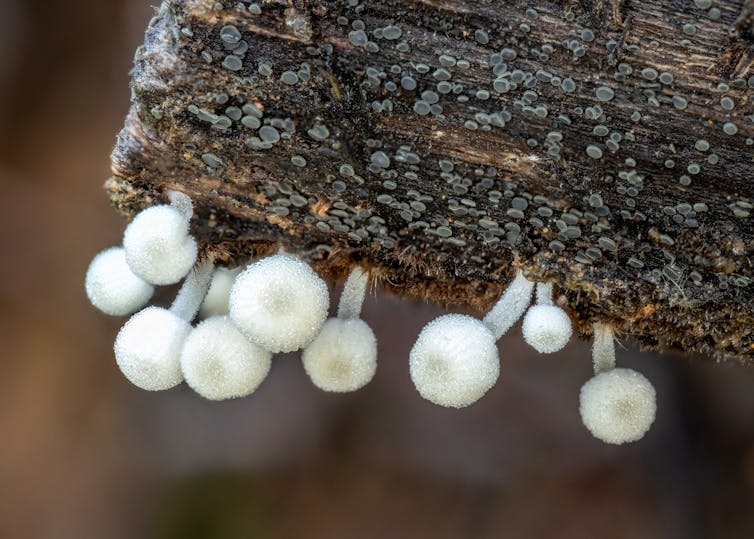
Mind The Knowledge Gap
So why does all this matter?
First, Australia’s biodiversity is under severe and increasing threat. To manage and conserve our living organisms, we must first discover and name them.
At present, it’s likely many undocumented species are becoming extinct, invisibly, before we know they exist. Or, perhaps worse, they will be discovered and named from dead specimens in our museums long after they have gone extinct in nature.
Second, many undiscovered species are crucial in maintaining a sustainable environment for us all. Others may emerge as pests and threats in future; most species are rarely noticed until something goes wrong. Knowing so little about them is a huge risk.
Third, enormous benefits are to be gained from these invisible species, once they are known and documented. A report released today by Deloitte Access Economics, commissioned by Taxonomy Australia, estimates a benefit to the national economy of between A$3.7 billion and A$28.9 billion if all remaining Australian species are documented.
Benefits will be greatest in biosecurity, medicine, conservation and agriculture. The report found every $1 invested in discovering all remaining Australian species will bring up to $35 of economic benefits. Such a cost-benefit analysis has never before been conducted in Australia.
The investment would cover, among other things, research infrastructure, an expanded grants program, a national effort to collect specimens of all species and new facilities for gene sequencing.
Read more: A few months ago, science gave this rare lizard a name – and it may already be headed for extinction
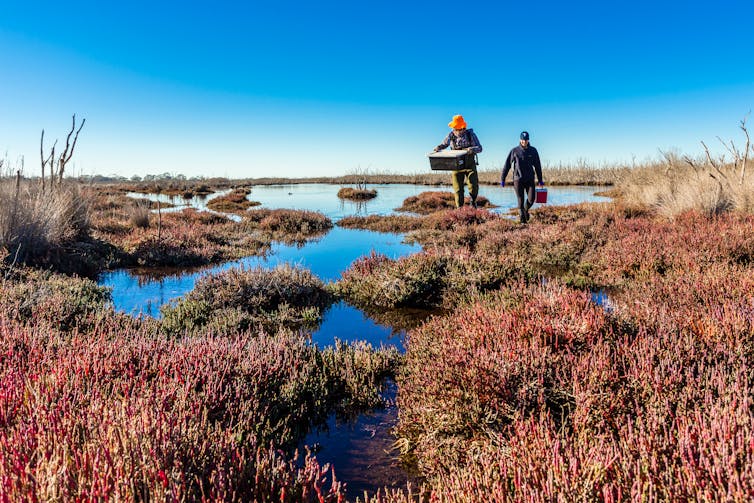
Mission Possible
Australian taxonomists – in museums, herbaria, universities, at the CSIRO and in government departments – have spent the last few years planning an ambitious mission to discover and document all remaining Australian species within a generation.
So, is this ambitious goal achievable, or even imaginable? Fortunately, yes.
It will involve deploying new and emerging technologies, including high-throughput robotic DNA sequencing, artificial intelligence and supercomputing. This will vastly speed up the process from collecting specimens to naming new species, while ensuring rigour and care in the science.
A national meeting of Australian taxonomists, including the young early career researchers needed to carry the mission through, was held last year. The meeting confirmed that with the right technologies and more keen and bright minds trained for the task, the rate of species discovery in Australia could be sped up by the necessary 16-fold – reducing 400 years of effort to 25 years.
With the right people, technologies and investment, we could discover all Australian species. By 2050 Australia could be the world’s first biologically mega-rich nation to have documented all our species, for the direct benefit of this and future generations.
Read more: Hundreds of Australian lizard species are barely known to science. Many may face extinction ![]()
Kevin Thiele, Adjunct Assoc. Professor, The University of Western Australia and Jane Melville, Senior Curator, Terrestrial Vertebrates, Museums Victoria
This article is republished from The Conversation under a Creative Commons license. Read the original article.
Bushcare In Pittwater
Where we work Which day What time
Avalon
Angophora Reserve 3rd Sunday 8:30 - 11:30am
Avalon Dunes 1st Sunday 8:30 - 11:30am
Avalon Golf Course 2nd Wednesday 3 - 5:30pm
Careel Creek 4th Saturday 8:30 - 11:30am
Toongari Reserve 3rd Saturday 9 - 12noon (8 - 11am in summer)
Bangalley Headland 2nd Sunday 9 to 12noon
Bayview
Winnererremy Bay 4th Sunday 9 to 12noon
Bilgola
North Bilgola Beach 3rd Monday 9 - 12noon
Algona Reserve 1st Saturday 9 - 12noon
Plateau Park 1st Friday 8:30 - 11:30am
Church Point
Browns Bay Reserve 1st Tuesday 9 - 12noon
McCarrs Creek Reserve Contact Bushcare Officer To be confirmed
Clareville
Old Wharf Reserve 3rd Saturday 8 - 11am
Elanora
Kundibah Reserve 4th Sunday 8:30 - 11:30am
 Mona Vale
Mona Vale Mona Vale Beach Basin 1st Saturday 8 - 11am
Mona Vale Dunes 2nd Saturday +3rd Thursday 8:30 - 11:30am
Newport
Bungan Beach 4th Sunday 9 - 12noon
Crescent Reserve 3rd Sunday 9 - 12noon
North Newport Beach 4th Saturday 8:30 - 11:30am
Porter Reserve 2nd Saturday 8 - 11am
North Narrabeen
Irrawong Reserve 2nd Saturday 2 - 5pm
Palm Beach
North Palm Beach Dunes 3rd Saturday 9 - 12noon
Scotland Island
Catherine Park 2nd Sunday 10 - 12:30pm
Elizabeth Park 1st Saturday 9 - 12noon
Pathilda Reserve 3rd Saturday 9 - 12noon
Warriewood
Warriewood Wetlands 1st Sunday 8:30 - 11:30am
Whale Beach
Norma Park 1st Friday 9 - 12noon
Western Foreshores
Coopers Point, Elvina Bay 2nd Sunday 10 - 1pm
Rocky Point, Elvina Bay 1st Monday 9 - 12noon
Gardens And Environment Groups And Organisations In Pittwater
Avalon Golf Course Bushcare Needs You
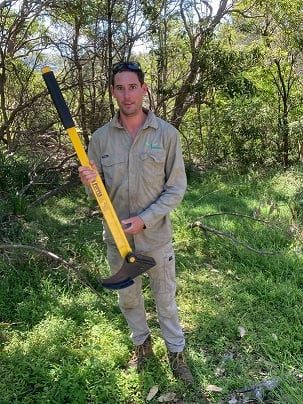
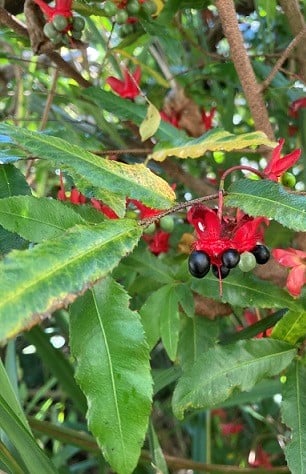
Pittwater Reserves

New Shorebirds WingThing For Youngsters Available To Download
A Shorebirds WingThing educational brochure for kids (A5) helps children learn about shorebirds, their life and journey. The 2021 revised brochure version was published in February 2021 and is available now. You can download a file copy here.
If you would like a free print copy of this brochure, please send a self-addressed envelope with A$1.10 postage (or larger if you would like it unfolded) affixed to: BirdLife Australia, Shorebird WingThing Request, 2-05Shorebird WingThing/60 Leicester St, Carlton VIC 3053.

 Shorebird Identification Booklet
Shorebird Identification Booklet
The Migratory Shorebird Program has just released the third edition of its hugely popular Shorebird Identification Booklet. The team has thoroughly revised and updated this pocket-sized companion for all shorebird counters and interested birders, with lots of useful information on our most common shorebirds, key identification features, sighting distribution maps and short articles on some of BirdLife’s shorebird activities.
The booklet can be downloaded here in PDF file format: http://www.birdlife.org.au/documents/Shorebird_ID_Booklet_V3.pdf
Paper copies can be ordered as well, see http://www.birdlife.org.au/projects/shorebirds-2020/counter-resources for details.
Download BirdLife Australia's children’s education kit to help them learn more about our wading birdlife
Shorebirds are a group of wading birds that can be found feeding on swamps, tidal mudflats, estuaries, beaches and open country. For many people, shorebirds are just those brown birds feeding a long way out on the mud but they are actually a remarkably diverse collection of birds including stilts, sandpipers, snipe, curlews, godwits, plovers and oystercatchers. Each species is superbly adapted to suit its preferred habitat. The Red-necked Stint is as small as a sparrow, with relatively short legs and bill that it pecks food from the surface of the mud with, whereas the Eastern Curlew is over two feet long with a exceptionally long legs and a massively curved beak that it thrusts deep down into the mud to pull out crabs, worms and other creatures hidden below the surface.
Some shorebirds are fairly drab in plumage, especially when they are visiting Australia in their non-breeding season, but when they migrate to their Arctic nesting grounds, they develop a vibrant flush of bright colours to attract a mate. We have 37 types of shorebirds that annually migrate to Australia on some of the most lengthy and arduous journeys in the animal kingdom, but there are also 18 shorebirds that call Australia home all year round.
What all our shorebirds have in common—be they large or small, seasoned traveller or homebody, brightly coloured or in muted tones—is that each species needs adequate safe areas where they can successfully feed and breed.
The National Shorebird Monitoring Program is managed and supported by BirdLife Australia.
This project is supported by Glenelg Hopkins Catchment Management Authority and Hunter Local Land Services through funding from the Australian Government’s National Landcare Program. Funding from Helen Macpherson Smith Trust and Port Phillip Bay Fund is acknowledged.
The National Shorebird Monitoring Program is made possible with the help of over 1,600 volunteers working in coastal and inland habitats all over Australia.
The National Shorebird Monitoring program (started as the Shorebirds 2020 project initiated to re-invigorate monitoring around Australia) is raising awareness of how incredible shorebirds are, and actively engaging the community to participate in gathering information needed to conserve shorebirds.
In the short term, the destruction of tidal ecosystems will need to be stopped, and our program is designed to strengthen the case for protecting these important habitats.
In the long term, there will be a need to mitigate against the likely effects of climate change on a species that travels across the entire range of latitudes where impacts are likely.
The identification and protection of critical areas for shorebirds will need to continue in order to guard against the potential threats associated with habitats in close proximity to nearly half the human population.
Here in Australia, the place where these birds grow up and spend most of their lives, continued monitoring is necessary to inform the best management practice to maintain shorebird populations.
BirdLife Australia believe that we can help secure a brighter future for these remarkable birds by educating stakeholders, gathering information on how and why shorebird populations are changing, and working to grow the community of people who care about shorebirds.
To find out more visit: http://www.birdlife.org.au/projects/shorebirds-2020/shorebirds-2020-program
Aussie Bread Tags Collection Points

'Green steel' is hailed as the next big thing in Australian industry. Here's what the hype is all about
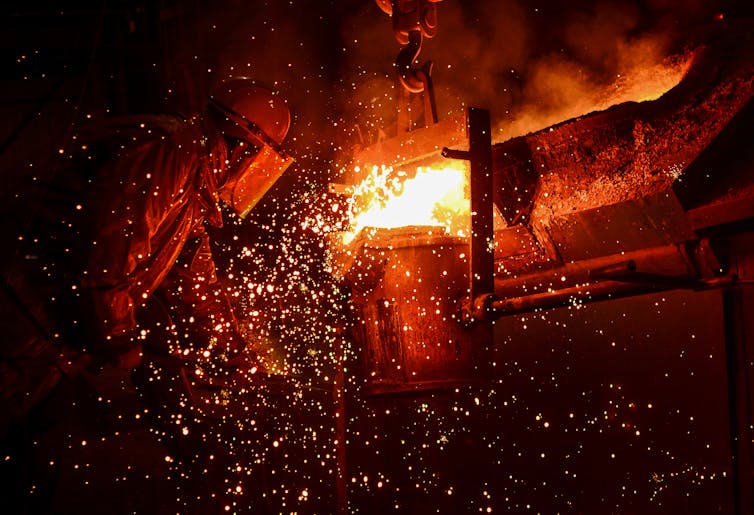
Steel is a major building block of our modern world, used to make everything from cutlery to bridges and wind turbines. But the way it’s made – using coal – is making climate change worse.
On average, almost two tonnes of carbon dioxide (CO₂) are emitted for every tonne of steel produced. This accounts for about 7% of global greenhouse gas emissions. Cleaning up steel production is clearly key to Earth’s low-carbon future.
Fortunately, a new path is emerging. So-called “green steel”, made using hydrogen rather than coal, represents a huge opportunity for Australia. It would boost our exports, help offset inevitable job losses in the fossil fuel industry and go a long way to tackling climate change.
Australia’s abundant and cheap wind and solar resources mean we’re well placed to produce the hydrogen a green steel industry needs. So let’s take a look at how green steel is made, and the challenges ahead.
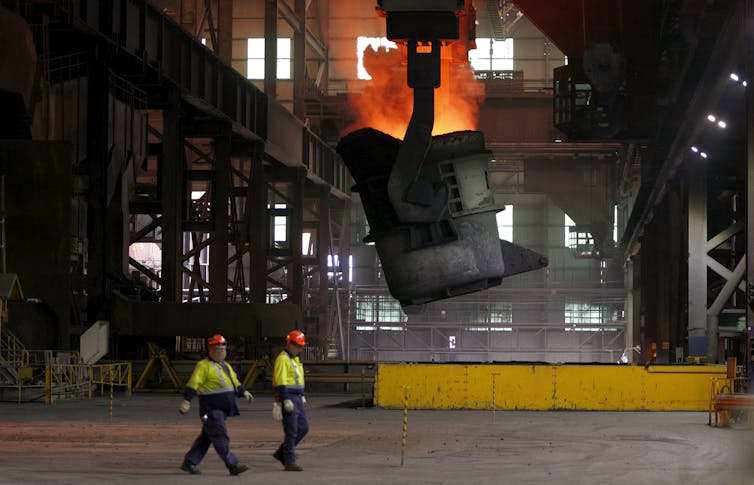
Steeling For Change
Steel-making requires stripping oxygen from iron ore to produce pure iron metal. In traditional steel-making, this is done using coal or natural gas in a process that releases CO₂. In green steel production, hydrogen made from renewable energy replaces fossil fuels.
Australia exports almost 900 million tonnes of iron ore each year, but only makes 5.5 million tonnes of steel. This means we have great capacity to ramp up steel production.
A Grattan Institute report last year found if Australia captured about 6.5% of the global steel market, this could generate about A$65 billion in annual export revenue and create 25,000 manufacturing jobs in Queensland and New South Wales.
Steel-making is a complex process and is primarily achieved via one of three processes. Each of them, in theory, can be adapted to produce green steel. We examine each process below.
Read more: Australia could fall apart under climate change. But there's a way to avoid it
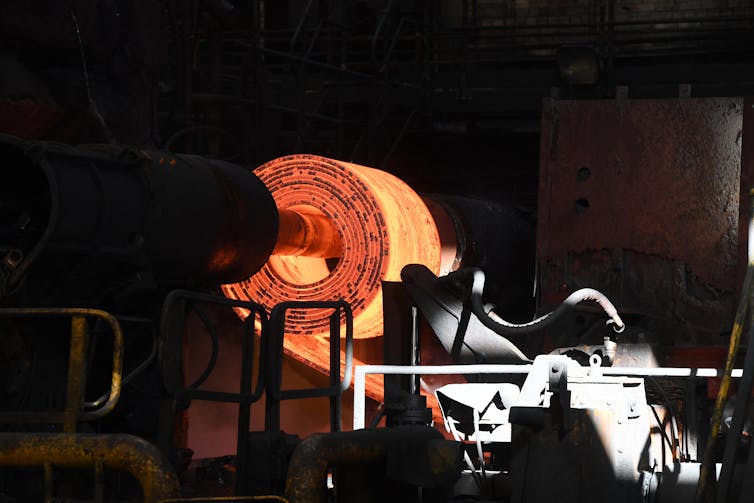
1. Blast Furnace
Globally, about 70% of steel is produced using the blast furnace method.
As part of this process, processed coal (also known as coke) is used in the main body of the furnace. It acts as a physical support structure for materials entering and leaving the furnace, among other functions. It’s also partially burnt at the bottom of the furnace to both produce heat and make carbon monoxide, which strips oxygen from iron ore leaving metallic iron.
This coal-driven process leads to CO₂ emissions. It’s feasible to replace a portion of the carbon monoxide with hydrogen. The hydrogen can strip oxygen away from the ore, generating water instead of CO₂. This requires renewable electricity to produce green hydrogen.
And hydrogen cannot replace carbon monoxide at a ratio of 1:1. If hydrogen is used, the blast furnace needs more externally added heat to keep the temperature high, compared with the coal method.
More importantly, solid coal in the main body of the furnace cannot be replaced with hydrogen. Some alternatives have been developed, involving biomass – a fuel developed from living organisms – blended with coal.
But sourcing biomass sustainably and at scale would be a challenge. And this process would still likely create some fossil-fuel derived emissions. So to ensure the process is “green”, these emissions would have to be captured and stored – a technology which is currently expensive and unproven at scale.
Read more: Australians want industry, and they'd like it green. Steel is the place to start
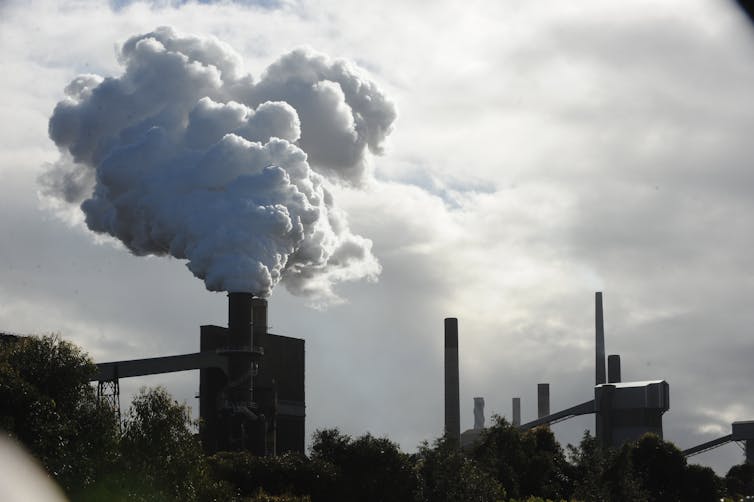
2. Recycled Steel
Around 30% of the world’s steel is made from recycled steel. Steel has one of the highest recycling rates of any material.
Steel recycling is mainly done in arc furnaces, driven by electricity. Each tonne of steel produced using this method produces about 0.4 tonnes of CO₂ – mostly due to emissions produced by burning fossil fuels for electricity generation. If the electricity was produced from renewable sources, the CO₂ output would be greatly reduced.
But steel cannot continuously be recycled. After a while, unwanted elements such as copper, nickel and tin begin to accumulate in the steel, reducing its quality. Also, steel has a long lifetime and low turnover rate. This means recycled steel cannot meet all steel demand, and some new steel must be produced.
3. Direct Reduced Iron
“Direct reduced iron” (DRI) technology often uses methane gas to produce hydrogen and carbon monoxide, which are then used to turn iron ore into iron. This method still creates CO₂ emissions, and requires more electricity than the blast furnace method. However its overall emission intensity can be substantially lower.
The method currently accounts for less than 5% of production, and offers the greatest opportunity for using green hydrogen.
Up to 70% of the hydrogen derived from methane could be replaced with green hydrogen without having to modify the production process too much. However work on using 100% green hydrogen in this method is ongoing.
Read more: For hydrogen to be truly 'clean' it must be made with renewables, not coal
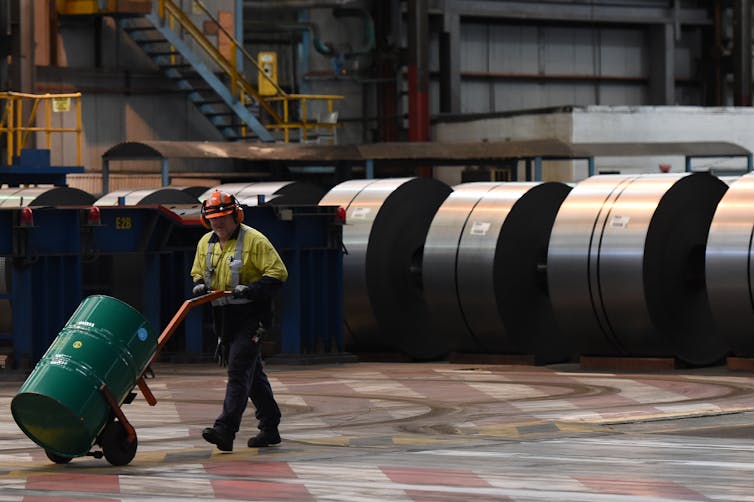
Becoming A Green Steel Superpower
The green steel transition won’t happen overnight and significant challenges remain.
Cheap, large-scale green hydrogen and renewable electricity will be required. And even if green hydrogen is used, to achieve net-zero emissions the blast furnace method will still require carbon-capture and storage technologies – and so too will DRI, for the time being.
Private sector investment is needed to create a global-scale export industry. Australian governments also have a big role to play, in building skills and capability, helping workers retrain, funding research and coordinating land-use planning.
Revolutionising Australia’s steel industry is a daunting task. But if we play our cards right, Australia can be a major player in the green manufacturing revolution.![]()
Jessica Allen, Senior Lecturer and DECRA Fellow, University of Newcastle and Tom Honeyands, Director, Centre for Ironmaking Materials Research, University of Newcastle
This article is republished from The Conversation under a Creative Commons license. Read the original article.
Peter Wegner’s portrait of Guy Warren at 100 wins the 100th Archibald Prize

The artist Guy Warren gave the best summary of this year’s centenary Archibald Prize, telling the crowd assembled for the official announcement: “It’s a lot of fun”.
Appropriately, as well as praising Peter Wegner, whose portrait of the centenarian won this year’s Archibald Prize, Warren congratulated the many artists whose works hang alongside his likeness.
Warren is an Archibald realist. He knows the almost random nature of the first cull where the Trustees decide which works have a chance to be considered for hanging, while the great majority go directly to the stacks of rejects.
In 1985 both Warren and his good friend, the artist Bert Flugelman, entered portraits of each other. Portraiture was a departure in style for both men. Although he had worked for some years as a graphic artist, Warren was best known for both experimental work and fluid semi-abstract landscapes. Flugelman had an established reputation as a sculptor.
Flugelman’s portrait of Warren was not hung. Guy Warren’s portrait, Flugelman with Wingman won the prize. With this year’s prize, Warren therefore has the rare distinction of both winning the prize and being the subject of a winning painting.
More Works By Women, But A Male Winner
Our public institutions are keenly aware of gender equity in 2021. Art Gallery of NSW director Michael Brand was at pains to tell the assembled throng of journalists, photographers, film crew, artists and actors (including Rachel Griffiths in prime position to film both the crowd and the podium for her forthcoming documentary) that more works by women than men had been hung this year.
Jude Rae and Pat Hoffie were highly commended by judges. But the tradition of giving the big prize to a portrait of a man, by a man, prevailed.
And it’s not a bad painting. The artist-subject is shown sitting on a chair, with his arms awkwardly placed, staring into the distance. He looks somewhat frail. Because of the echoes of history, it will be both a popular choice and a reminder that, at its core, the Archibald is a prize for social history, not art.
Artistic Peers And Stars
The other prizes announced at the same time reflect both old traditions and the new.
It was not a surprise that Georgia Spain, whose Getting down or falling up was awarded the Sulman Prize. Guest judge Elisabeth Cummings, was one of her favourite artists, the winner told the crowd. Indeed, there are strong echoes of Cummings’ painterly approach in Spain’s work.
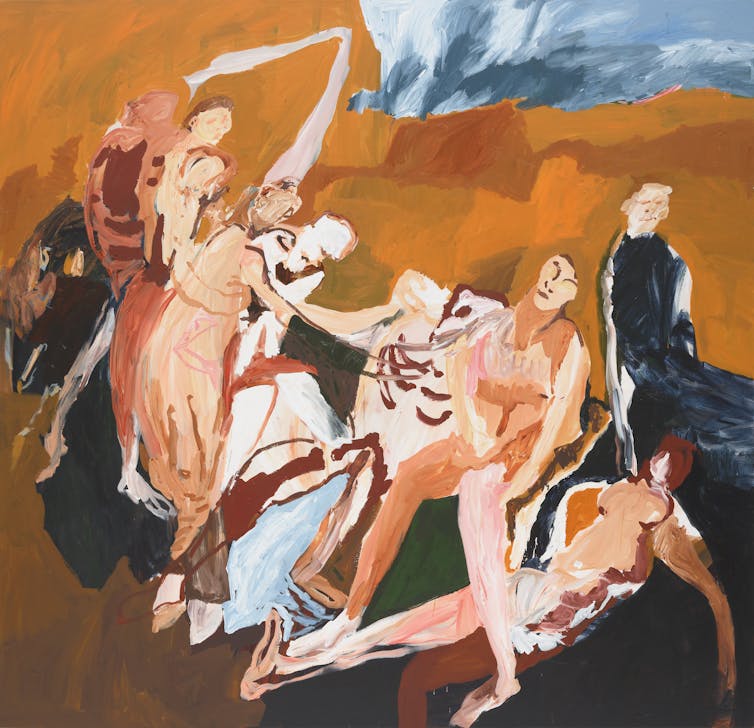
The Sulman, unlike the other prizes, is judged by a different artist each year. Those considering entering the prize should always look at the judge’s art before entering their own.
In recent years the Wynne Prize has been dominated by work by Aboriginal artists from either central or northern Australia, and this year is no exception. Yolŋu artist Nyapanyapa Yunupiŋu’s Garak Night Sky, is muted in tone, but stunningly beautiful.
It is a retelling of one of the great narratives of Aboriginal Australia — the Seven Sisters, the constellation also referred to in non-Indigenous cultures as Pleiades.
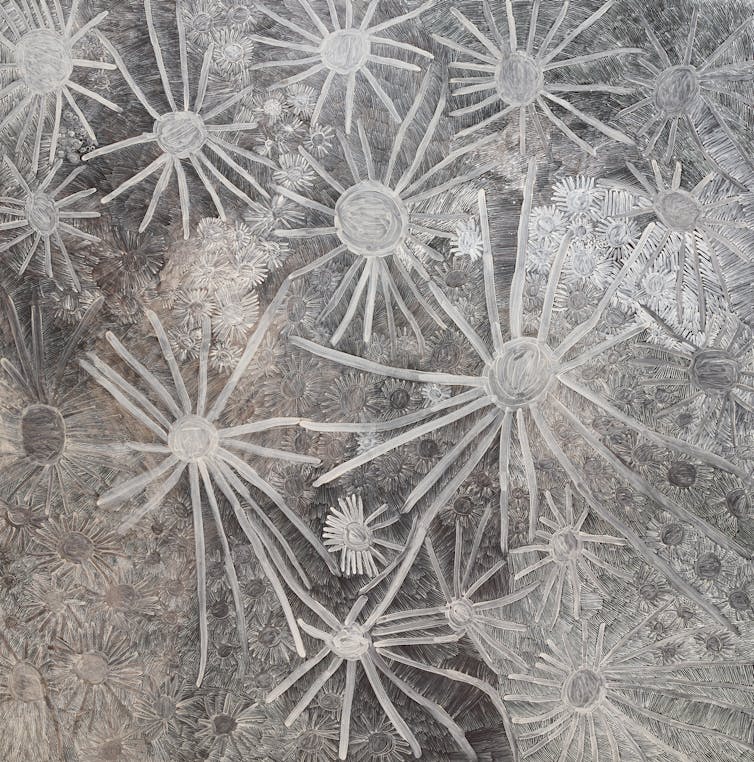
The story of the Seven Sisters is repeated in Tjungkara Ken’s painting, which was awarded the Roberts Family Aboriginal and Torres Strait Islander Prize this year. Just as European artists can paint infinite variations on the theme of the Nativity, so the Seven Sisters remain an ever fertile subject for Indigenous artists.
The Colour Of Water
Noel McKenna’s sweet little South Coast headland (2), Ottoman rose was awarded the Trustees Watercolour Prize, a subset of the Wynne Prize.
Leah Bullen’s Arid garden, Wollongong was awarded the Pring Prize for a watercolour by a woman. In times past so few women entered (or were hung) in the Wynne that this prize was sometimes not awarded. This year the competition was stronger.
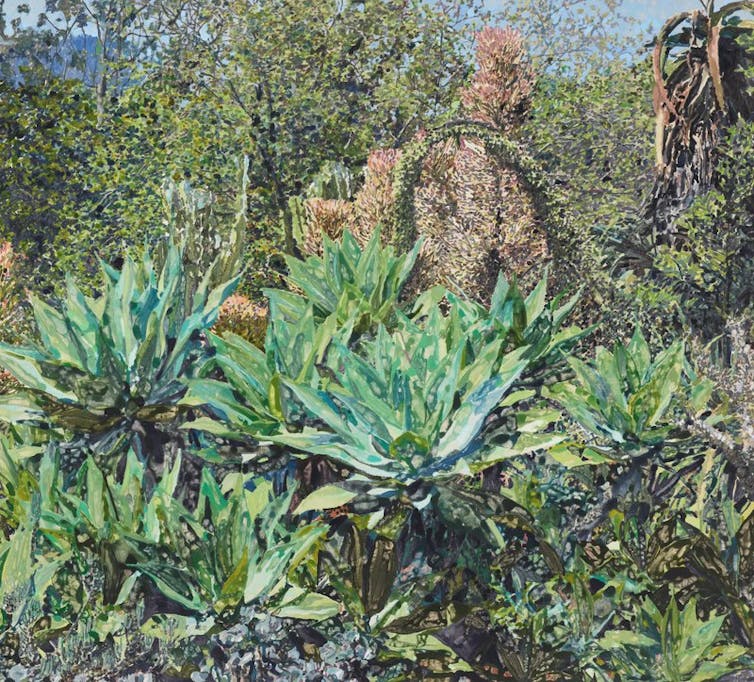
Read more: Why weren't there any great women artists? In gratitude to Linda Nochlin
Now that the judges have spoken, it is time for the people to have their say. For the last 33 years the gallery has awarded the ANZ People’s Choice award, with votes cast by visitors to the exhibition. Occasionally, but rarely, the people agree with the judges.
All finalists in the Archibald, Wynne and Sulman Prizes 2021 will be exhibited at the Art Gallery of NSW from 5 June to 26 September 2021, then tour regionally.![]()
Joanna Mendelssohn, Principal Fellow (Hon), Victorian College of the Arts, University of Melbourne. Editor in Chief, Design and Art of Australia Online, The University of Melbourne
This article is republished from The Conversation under a Creative Commons license. Read the original article.
Photos from the field: the stunning crystals revealing deep secrets about Australian volcanoes
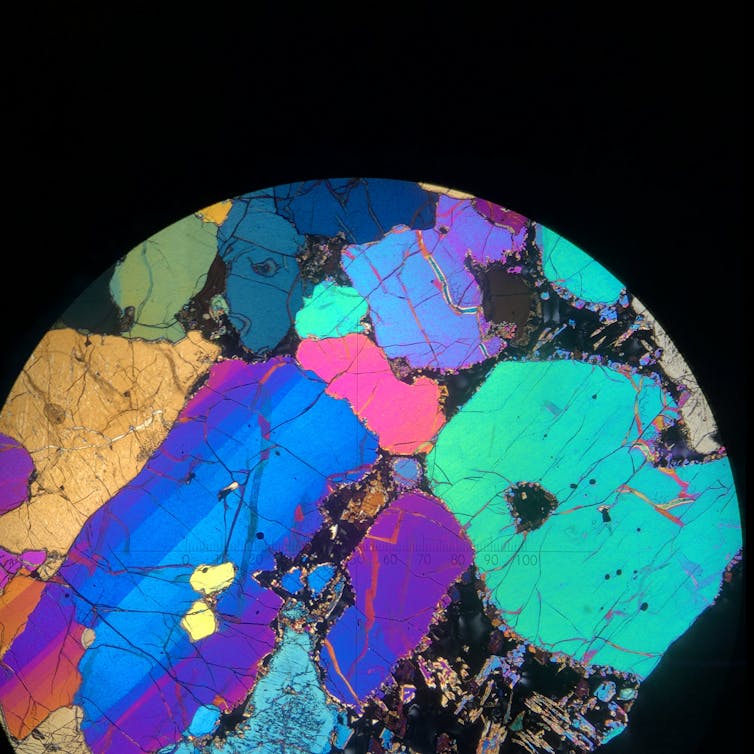
Environmental scientists see flora, fauna and phenomena the rest of us rarely do. In this series, we’ve invited them to share their unique photos from the field.
Volcanic activity is a constant global threat. It’s estimated over 1 billion people live within the potential, direct impact range of volcanic eruptions.
Just recently, lava flows from the eruption of Mount Nyiragongo, a volcano in the Democratic Republic of Congo, killed 32 people, with many more missing. Tens of thousands of people have been forced to flee the city of Goma.
This shows why understanding more about the inner workings of volcanoes is critical to improve the safety of those living in their shadows.
As a volcano scientist, my research takes me across Australia and all over the world. But sometimes, the most stunning revelations actually occur in the lab.
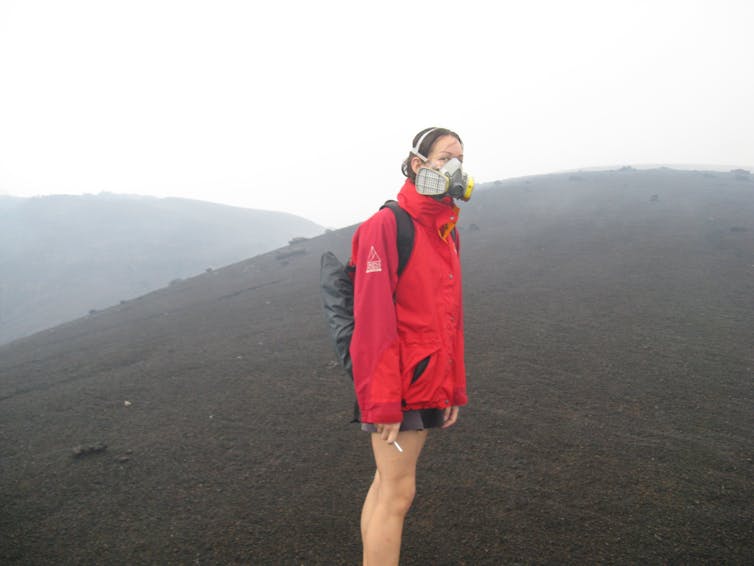
I take a microscopic look at volcanic rocks and fragments of the Earth’s mantle to estimate just how fast molten rock (magma) moves from deep in the Earth to the surface. This can help us prepare for future eruptions.
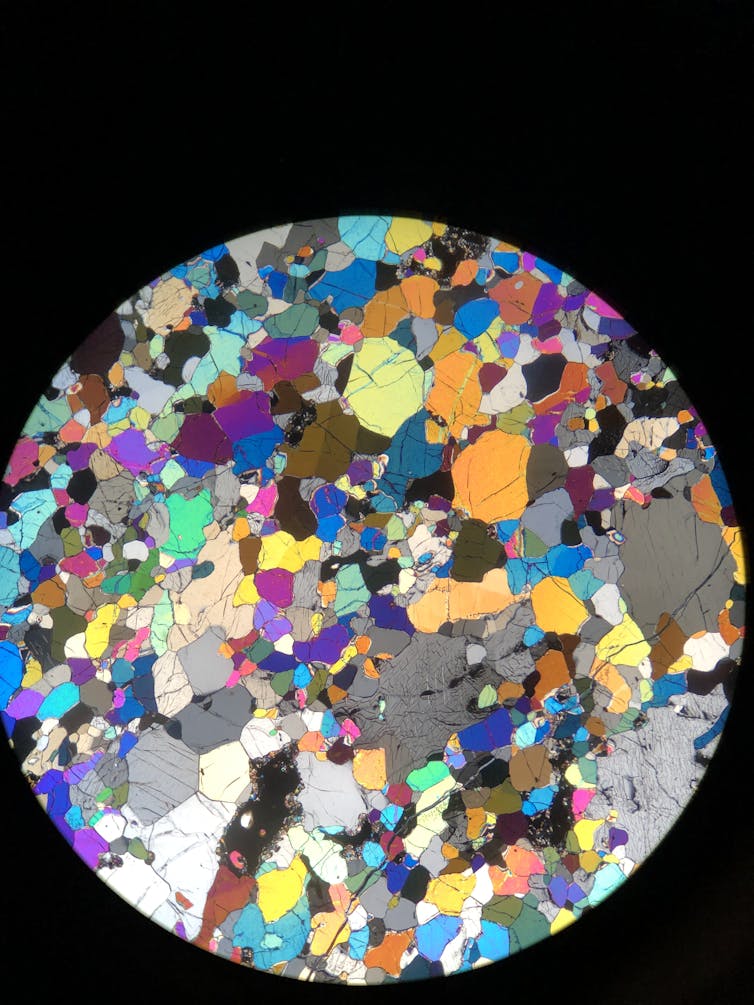
Australia’s Fiery Past — And Future
Since the demise of the dinosaurs to recent human settlement, magmatic activity has left behind a trail of volcanoes stretching over 4,000 kilometres down Australia’s eastern margin, forming one of the world’s most extensive volcanic belts.
Read more: Australia's volcanic history is a lot more recent than you think
The last mainland eruptions took place at Mount Gambier and Mount Schank in South Australia around 5,000 years ago, a mere blink of a geological eye.
These eruptions were witnessed by local Aboriginal people and incorporated into oral traditions that have been passed down for hundreds of generations.
Based on the time since the last eruption, there are potentially two active volcanic regions in mainland Australia: in the northeast (southwest of Cairns) and southeast (from Melbourne across into South Australia).
The Mount Gambier and Mount Schank volcanoes are two of more than 400 volcanoes in the active southeast region called the Newer Volcanics Province, which has been active for at least the last 4.5 million years.
It’s considered likely there’ll be a future eruption in this province, but it’s not known when or where exactly the eruption will be.
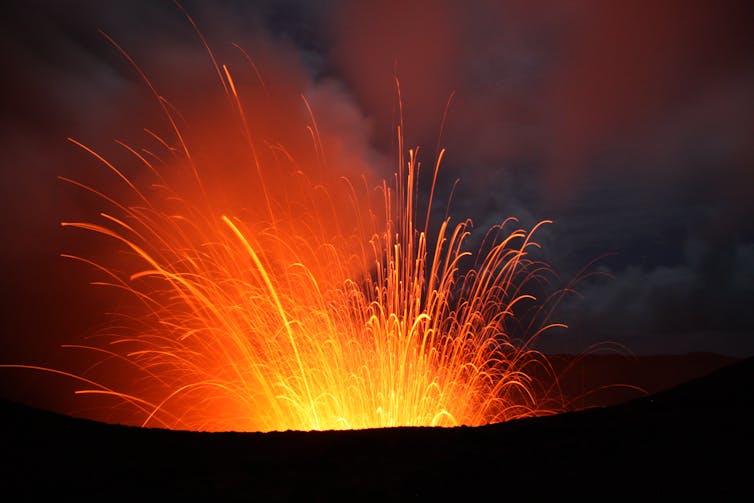
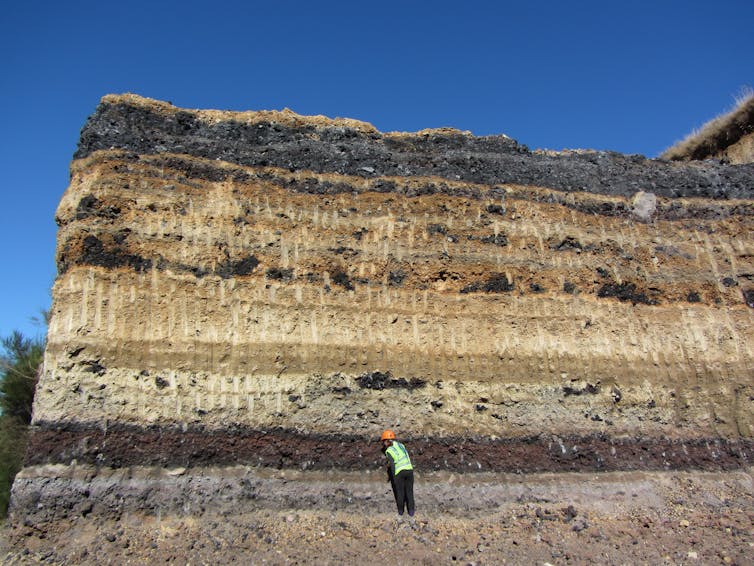
So How Much Warning Time Might We Have?
To answer this question, we have to unravel the secrets held by past eruptions, now locked away in the erupted rocks and the crystals within them.
Our first clue is that many of the dark black volcanic rocks that erupted in the Newer Volcanics Province (and others) contain chunks of green rock, called peridotite.
These dense green rock fragments are, in fact, pieces of the Earth’s upper mantle that were plucked out by the rising magma and carried all the way to the surface from depths of greater than 30 or 40 kilometres below our feet.

These fragments can sink back down through the liquid rock during its ascent, like a pebble dropped into a cylinder of honey. So in order to reach the surface, the rising magma had to move fast — likely taking just a few days from the source.
Volcanic Crystal Balls
In the same way tree rings can tell you about what the climate was like when the tree grew, the crystals within volcanic rocks and the mantle fragments they carry preserve memories of the environment on their upward journey through the Earth.
In the photo below, you can see how cross-polarised light passing through the mantle rock reveals a mosaic of colourful crystals. The darker part is the enclosing volcanic rock.
This thin slice of rock is just 30 microns in thickness, about half the thickness of a typical human hair.
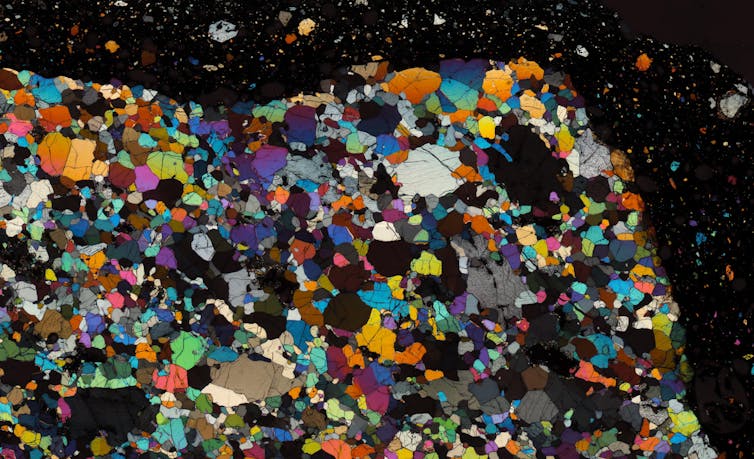
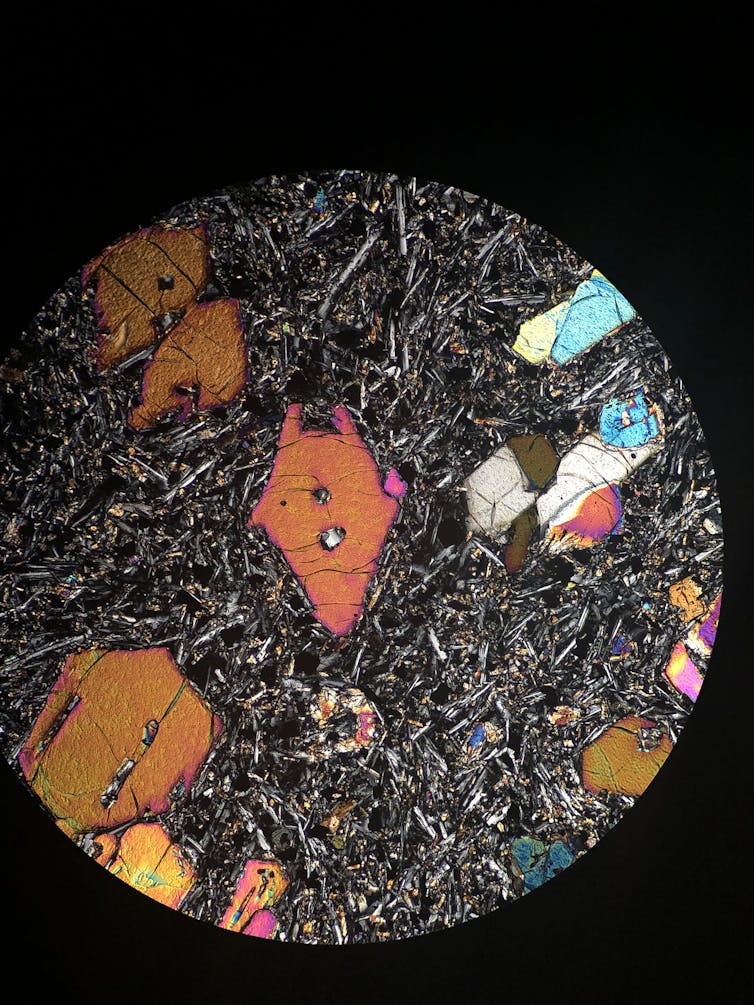
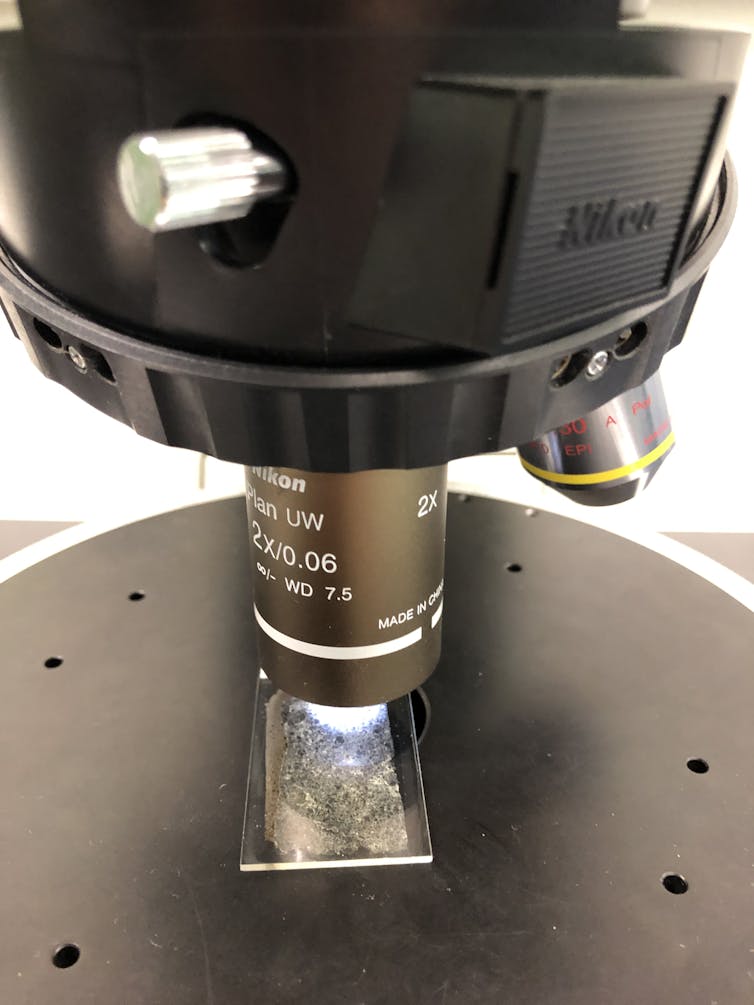
Now let’s take a look through a scanning electron microscope at the border where the mantle crystals make contact with the now-solidified magma.
In the two photos below, you can see the rim of the crystals has become lighter in colour, which means it changed its chemical composition. This is so it could adapt to its new magma environment on ascent in a process called diffusion.
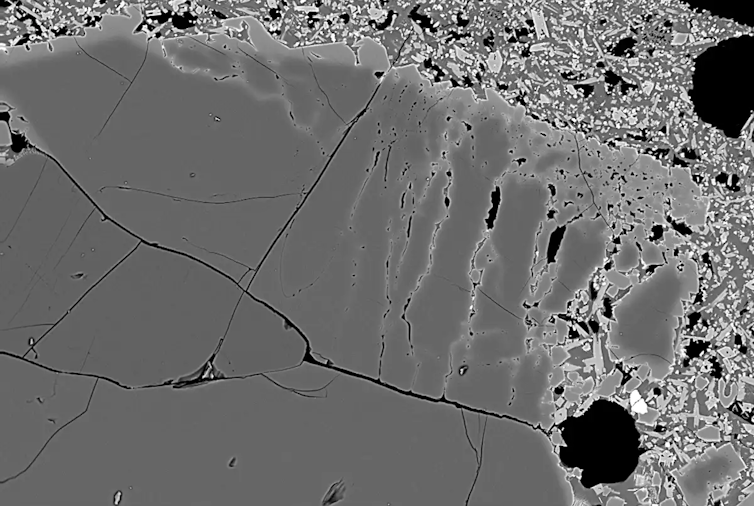
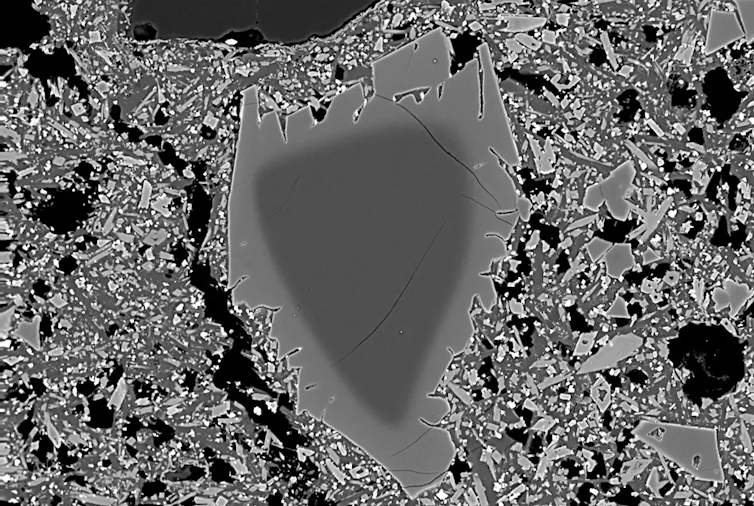
We use the sharpness of this chemical boundary to estimate how long mantle fragments sat in the magma before the rock erupted.
In other words, the minimum time magma took to travel from source to surface — an eruption warning time.
Read more: Curious Kids: Why do volcanoes erupt?
I can also use the chemistry and shapes of crystals that grew within the magma itself to map out the plumbing system beneath the volcano — the route magma takes to the surface.
The photos below show some of the different shapes crystals can form as the magma rises to the surface, cooling along the way. The spiky and skeleton-shaped crystals grow when the rising magma cools fast and by a large degree.
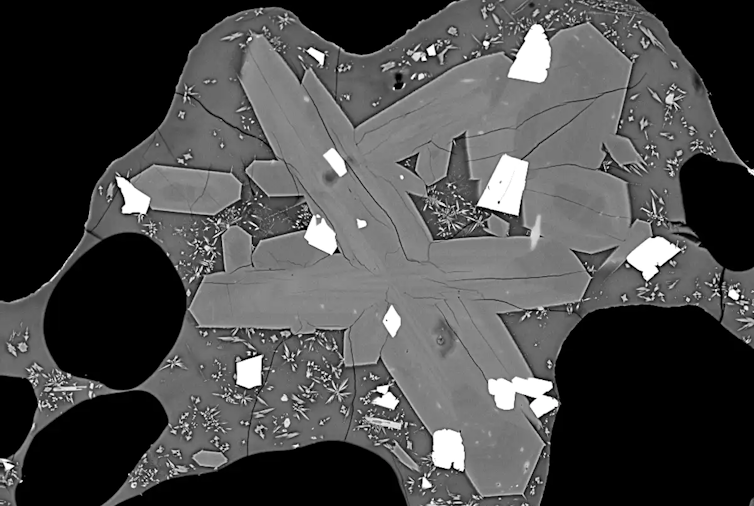
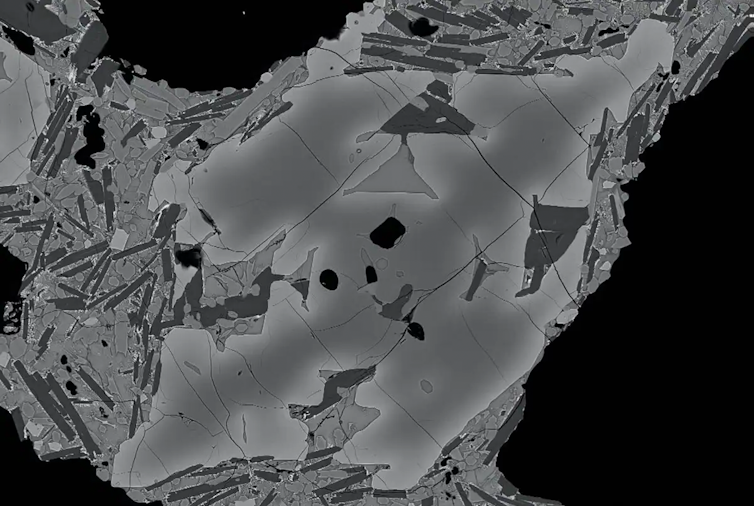
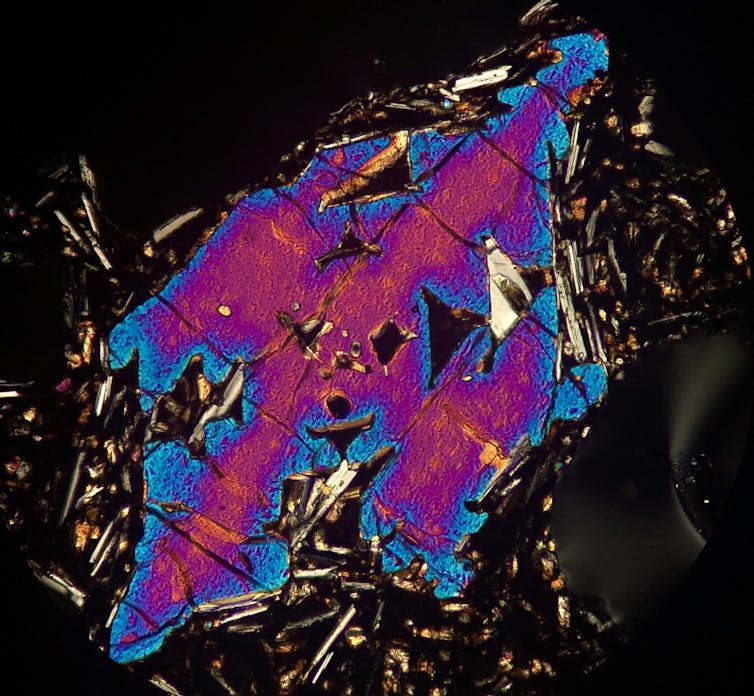
And we’re finding so far that individual volcanoes in the Newer Volcanics Province can take strikingly different pathways to the surface. This could result in varying eruption warning times.
Australia Isn’t Prepared
With likely maximum warning times of some past eruptions in Australia on the order of days, it’s worth considering how prepared we are for future eruptions — and not just from within Australia. If the global pandemic has taught us anything, it’s to expect the unexpected.
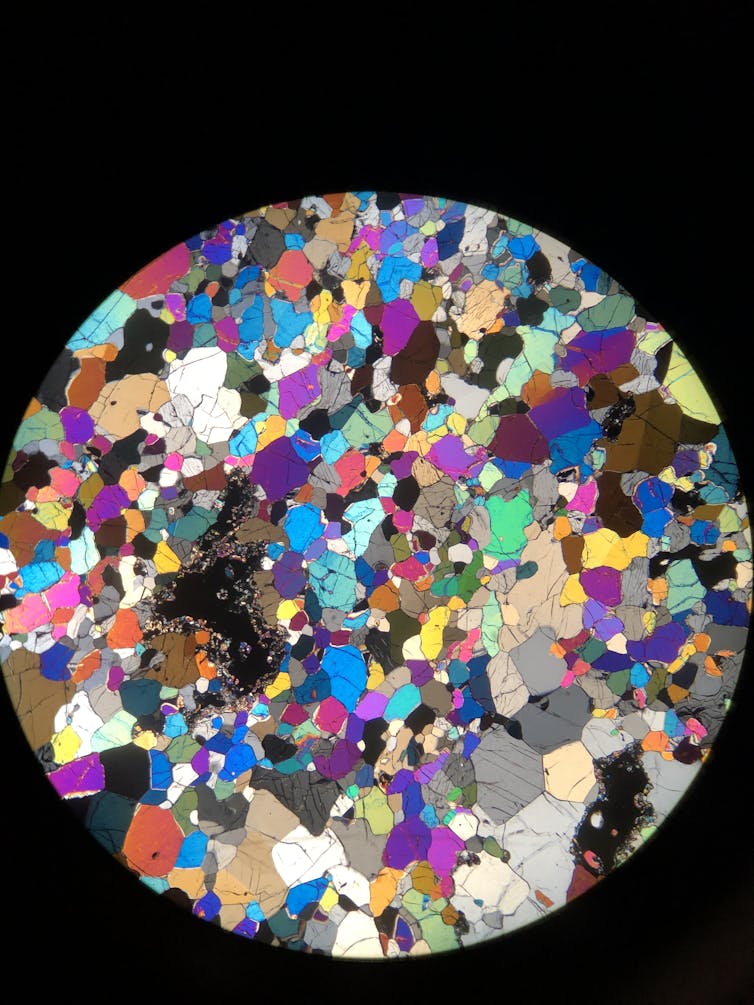
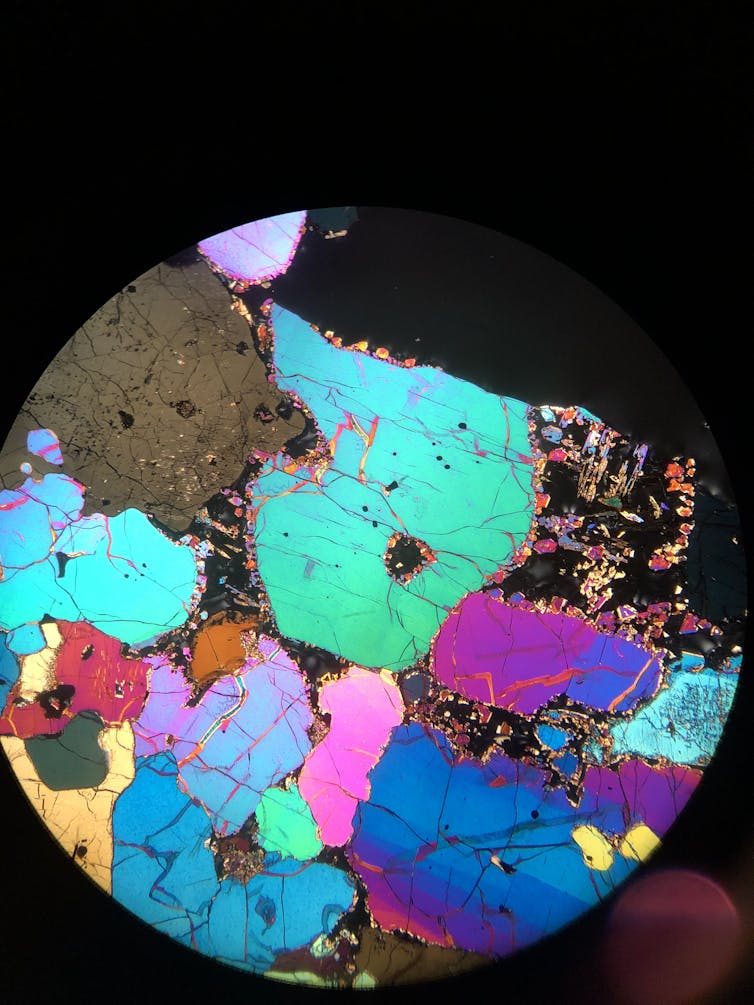
Large volcanic events are far from recent human memory, but in the Asia-Pacific region, they occur with a frequency of around every 400 years.
The federal government’s recent announcement of A$600 million towards establishing a new National Recovery and Resilience Agency will help Australia adapt to some climate change-associated hazards. But volcanic events appear to be excluded.
Preparing for the next potentially cataclysmic volcanic event in Australia’s neighbouring Ring of Fire should be part of Australia’s risk and resilience conversation.
Heather Handley, Honorary Associate Professor in Volcanology and Geochemistry, Macquarie University
This article is republished from The Conversation under a Creative Commons license. Read the original article.
'I didn't have a superhero that looked like me': Marvel's new female, culturally diverse and queer protagonists mirror our times

Last week, the trailer dropped for what will be the 26th movie in the Marvel Cinematic Universe franchise: Eternals, directed by Chloé Zhao. Opening with a dreamy, misty shoreline, we hear Skeeter Davis’s The End of the World. An ominous spaceship appears over the ocean, and the Eternals begin to prepare for the impending battle.
This year, Zhao was only the second woman (and first woman of colour) to win Best Director at the Academy Awards: a reminder of Hollywood’s entrenched gender and race biases. The cinematic world of Marvel, which began with Iron Man in 2008, has been similarly male and white.
Of the 23 Marvel films released so far, just one has been directed by a woman (Anna Boden, who co-directed Captain Marvel with Ryan Fleck) and two by people of colour (Ryan Coogler for Black Panther, and Taika Waititi for Thor: Ragnarok).
But things are changing.
In July, Natasha Romanoff (Scarlett Johansson) — one of the original Avengers — will finally get her own film in Black Widow, directed by Australian Cate Shortland.
In September, Destin Daniel Cretton’s Shang-Chi and the Legend of the Ten Rings will showcase a predominantly Asian cast, where superhero Shang-Chi (Simu Liu in the character’s film debut) encounters the terrorist group Ten Rings.
Read more: Oscar winners: how the pandemic led to a record-breaking year of diversity
Zhao’s Eternals, to be released in November, will see an immortal alien race forced out of hiding after thousands of years in a quest to save humanity. Starring a multicultural, ensemble cast including Gemma Chan, Salma Hayek and Angelina Jolie, Eternals will feature Marvel’s first openly queer superhero — Phastos (Brian Tyree Henry) — and deaf superhero — Makkari (Lauren Ridloff).
Asian American Cretton has said:
Growing up, I didn’t have a superhero that looked like me and it’s really exciting to give a new generation something I did not have.
Owned by Disney, Marvel Studios is an entertainment giant, which has grossed over US$22.5 billion (A$29 billion) at the global box office. Its investment in more diverse stories, characters and directors is clever marketing. But it is also an indication of the dynamic relationship between one of the world’s biggest film franchises and its fan base, and how they both sit within the broader culture.
Marvel, like all film studios, has found itself creating popular culture during a period of great social and political upheaval. Global movements such as #MeToo, #BlackLivesMatter and #StopAsianHate have been a clarion call for social justice.
These movements have exposed and challenged discrimination and violence against marginalised groups, including exclusion from representation on screen and behind the scenes.
Pressure from #MeToo activists has seen Hollywood hire more female filmmakers since 2018. In the wake of #BlackLivesMatter’s growth in 2014 came #OscarsSoWhite in 2015, a movement which led to a remarkable change in the diversity of filmmakers — and the recognition they received.
Knowing Their Audience
2018’s Black Panther broke new ground with its all Black lead cast and Coogler as the franchise’s first African American director. Making US$1.34 billion (A$1.72 billion) at the box office, it is the second highest grossing Marvel film in the US.
Read more: How I marvelled at Black Panther’s reimagining of Africa
2019’s Captain Marvel, the franchise’s first standalone female superhero film, with its first female director, made US$1.13 billion (A$1.45 billion) at the box office.
This year we had a Black Captain America for the first time in the Disney+ spin-off series The Falcon and the Winter Soldier. Directed by Kari Skogland, the series was the streaming service’s most watched premiere ever.
This casting, and the story the series told about race, resonated with viewers who were frustrated and angry at the criminalisation and disempowerment of Black men playing out time and again in the news media.
This is not to suggest Marvel is radically undoing the biases of society and the film industry, smashing stereotypes shored up by centuries of patriarchal or colonial domination. That would be an insurmountable challenge even for the Avengers.
Rather, Marvel’s increasingly liberal steps stem from an understanding of the power of the people. The franchise’s continued success depends on remaining culturally relevant and, crucially, not underestimating what its audiences want — and who its audiences are.
Familiar tropes of Asian-ness will appear in Shang-Chi and the Legend of the Ten Rings (Shang-Chi’s powers are, of course, martial arts skills). But by handing over the keys to Cretton and his culturally diverse creative team, we can expect Marvel’s first standalone Asian superhero film to be a nuanced, multifaceted depiction of Asian cultures and identities not seen before in the genre.
As an immigrant female director and Marvel enthusiast, Zhao perhaps epitomises the future — and logical endpoint — of Marvel’s quest for inclusion and diversity.
“I’m not just making [Eternals] as a director,” she said. “I’m making the film as a fan.”![]()
Christina Lee, Senior Lecturer in Literary and Cultural Studies, Curtin University
This article is republished from The Conversation under a Creative Commons license. Read the original article.
Denim jeans have long been political: now skinny jeans are in the firing line

Last week, reports emerged that North Korea was banning skinny jeans over concerns regarding their symbolic relationship with the “exotic and decadent lifestyle” of capitalism. The crackdown on “anti-socialist behaviour” also reportedly bans mullet, spiky or dyed hairstyles and piercings.
Although an official statement on the ban hasn’t been identified, policing of personal style in North Korea is not new.
Political leaders have long been aware of the representational power of fashion. In her book Fashion and Politics, fashion scholar Djurdja Bartlett notes that “as early as the 1920s, the Bolsheviks frowned on western fashion and its Art Deco opulence”.
The role of dress in promoting allegiance to the nation state can come in the form of a uniform or via the rejection of garments seen to symbolise religious, ideological or political beliefs.
Whether banning Western fashion in the Soviet Union or the burqa in France, political control over what we wear has always been controversial. But what is it about skinny jeans that apparently inspires denunciation by North Korea today?
The Skinny On Skinny Jeans
Slim or tight-fitted trousers are a direct descendant of tight men’s breeches worn in the 1800s.
Their denim offspring emerged in the 1950s as part of the counter-cultural movement. Most often worn in a dark wash with a cuffed hem, the jeans, favoured by the likes of Elvis Presley and Marlon Brando, were a gender-neutral representation of alternative lifestyles in the wake of the second world war.

In the 1960s, jeans in the “drainpipe” style — black and ultra-skinny — became synonymous with rock and roll.
Through the 1970s and 80s, the UK embraced the punk look – pioneered by designer Vivienne Westwood and the Sex Pistols, which saw tight jeans ripped, stained and safety pinned.

The 1990s brought baggy styles for rave dancing, bootlegs and retro flares. But skinny jeans didn’t stay gone for long. The 2000s saw them taken up, again by subcultures — emos and goths, who wore them super tight and low on the hips.
By the 2010s they seemed destined to stick around after being championed by Kate Moss, the Duchess of Cambridge and Michelle Obama.
Death By TikTok
Rumblings of change in the denim market were first heard in the late 2010s, when fashion journalists including Sarah Spellings claimed we could begin counting down to the return of low-rise jeans. The rise of 90s nostalgia fashion, popularised by models such as Bella Hadid, bought a return of wide-legged fits and exposed midriffs.
By 2019, skinny jeans were reportedly being usurped by so-called “mom jeans”. And that was before 2020 forced everyone indoors, where comfort trumped more fitted styles.
Gen Z “Zoomer” TikTokers finally rang the death knell for skinny jeans — adding a beat and some dance moves, of course. In early 2021, TikTok videos mocking Millennials for their side parted hair and tight denim-clad legs went viral.
So, if they’re no longer cool, why might North Korea want to ban them?
Read more: Dressed for success – as workers return to the office, men might finally shed their suits and ties
Trouser Power
What we wear on our legs has long been a subject of particular political significance, especially in terms of class and gender differentiation.
During the French Revolution, full length trousers became synonymous with the ideals of liberté, égalité, fraternité — but only for men. Women remained bound by the Ancien Régime, excluded from wearing trousers and from the social freedoms they allowed.
It followed that in the fight for suffrage, trousers became a symbolic garment in the emancipation of women as political subjects.
In the 1960s, meanwhile, blue denim became a symbol of the US civil rights movement and in 1978, Levi Strauss & Co began large-scale shipments of jeans behind the Iron Curtain.
Analysis today shows specific denim brands are aligned with political preferences: American Democrat voters tend to wear Levis, while Republican voters are more likely to prefer Wrangler jeans. Brands may also seek to align themselves with consumers by voicing support for specific issues.
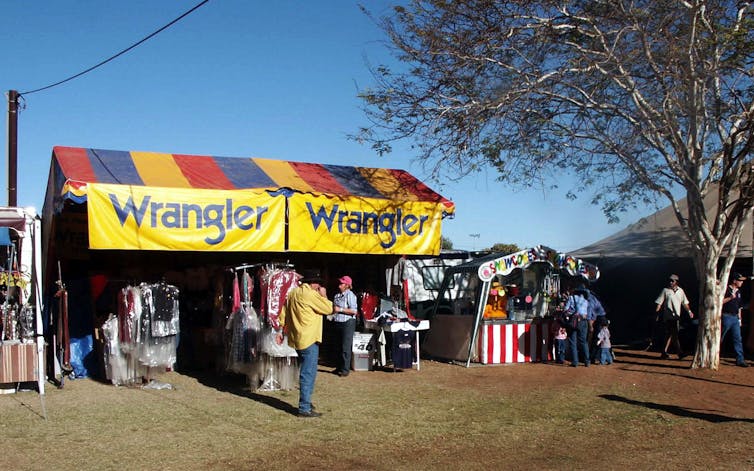
Most recently, a chief minister within India’s Bharatiya Janata Party government faced condemnation after he tweeted that women were immoral for wearing jeans that exposed their knees.
Across India women took to social media to voice their exasperation, posting photographs of themselves wearing torn denim with the hashtag #RippedJeans.
Read more: How women in India reclaimed the protest power of ripped jeans
Jeans are still provoking the powerful. Still, if the reports from North Korea are correct, railing against this symbolic garment may have given those willing to rebel a clearer sense of what to wear.![]()
Harriette Richards, Research Associate, Cultural Studies, The University of Melbourne
This article is republished from The Conversation under a Creative Commons license. Read the original article.
If you're planning to hike this winter, invest in the right gear. Being unprepared for Australia’s harsh terrain can be deadly
Vanessa Adams, University of Tasmania; Jason Byrne, University of Tasmania, and Noelle Nemeth, University of TasmaniaTwo years ago, emergency workers rescued a hiker in Cradle Mountain-Lake St Clair National Park. He had spent nine days in his tent in freezing weather with dangerous blizzards, trying to keep dry from infiltrating snow and rain.
Because he was an experienced and prepared hiker, he had the skills and gear needed to keep himself safe and relatively warm until rescuers could find him. His preparedness ultimately led to his survival.
Such experiences, however, don’t always have happy endings.
Of the hikers, trekkers and bushwalkers who need rescuing from Australia’s harsh wilderness each year, a small proportion never make it back alive. And as we head into winter, the likelihood of accidents increases, especially in places like Tasmania.
Our recent research on hikers in Tasmania shows just how important preparedness is to prevent injuries and deaths. So let’s look at what it means to be prepared for a hike and who’s most at risk.
Slips, Drops, Hypothermia
Tasmania is quickly becoming known worldwide as a hiking destination, with Cradle Mountain National Park the crown jewel, from short two-hour walks to the multi-day Overland track.
In 2017-18, an estimated 280,000 people visited Cradle Mountain, and 9,000 hikers completed the Overland track between October and May.
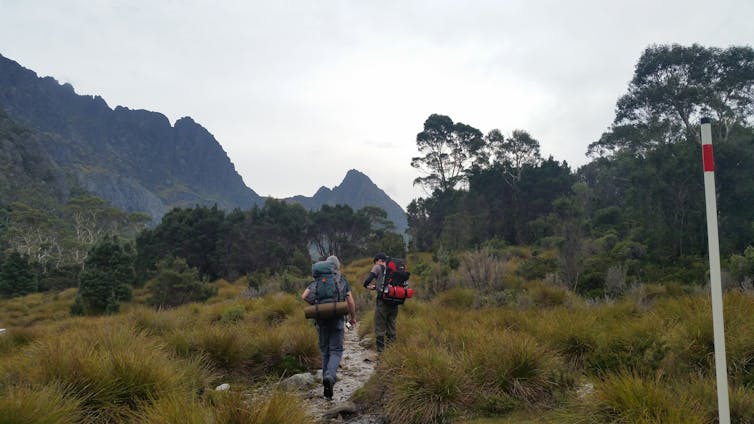
But in winter, Tasmania’s weather conditions can change rapidly, particularly in alpine areas that draw people in with the promise of snow-capped mountains. One hour it can be clear and sunny. The next, bad weather can worsen into a blizzard.
The island’s sometimes severe weather means risks are amplified. These can include getting lost, running out of food or water while sheltering, and having an accident such as falling from steep and slippery terrain.
Read more: Photos from the field: capturing the grandeur and heartbreak of Tasmania's giant trees
Across Tasmania, bushwalker rescues fluctuate substantially by year, from lows of six (2018) to highs of 44 (2019).
Of the recent hiker deaths in Tasmania, some have been due to falls from great heights, while others are attributed to a lack of preparation and appropriate gear causing hypothermia.
For park management agencies, rescuing injured hikers or recovering the deceased can be dangerous and expensive. Estimated rescue costs range from a few hundred dollars to tens of thousands of dollars per incident.
At times, bad weather conditions means rescue agencies can’t access sites. They have to make the challenging decision not to respond to rescue calls, to protect the lives of volunteers and rescue staff.
What Is Preparedness And Why Does It Matter?
Preparedness is about providing yourself with the necessary resources to safely tackle unexpected issues that may arise.
How prepared you are can be the difference between severe injury or death, and survival. We define preparedness as the process of:
packing essential clothing and equipment
conducting pre-planning and familiarisation with a destination (what are the weather conditions, or trail conditions like?)
self-assessment of capabilities (what’s your fitness level, and what are your wilderness knowledge and skills like?)
notifying others about your travel intentions.
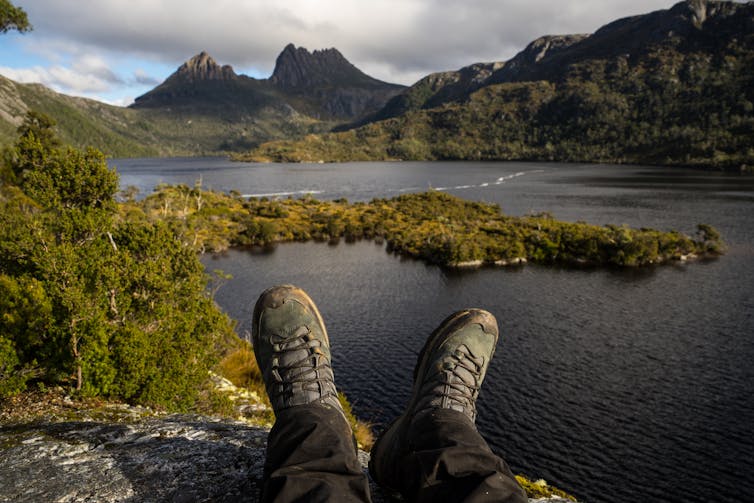
Some Hikers Are Better Prepared Than Others
Our research surveyed overnight hikers in Tasmania. And we found a lack of preparedness is related to people’s backgrounds (such as age and sex) and behavioural traits (such as risk taking).
Young men, for example, appear more likely to take risks, overestimating their skills and experience. Some tourist groups, who are unfamiliar with local weather conditions and landscapes, are also at higher risk.
In many accidents, inadequate clothing or footwear is a culprit, such as lack of woollen base layers, hats and gloves, and waterproof outer layers. This can result in hypothermia, frostbite, falls and other major problems.
We were surprised by what many hikers didn’t carry, including maps, compasses, whistles, and first aid kits — essential items for all hikers. Some told us they didn’t own that equipment, others thought it was unnecessary.
People in a tour group were less likely to carry food, a first aid kit and safety items, believing their guide would carry it for them. But if group members become separated, the consequences can be fatal.
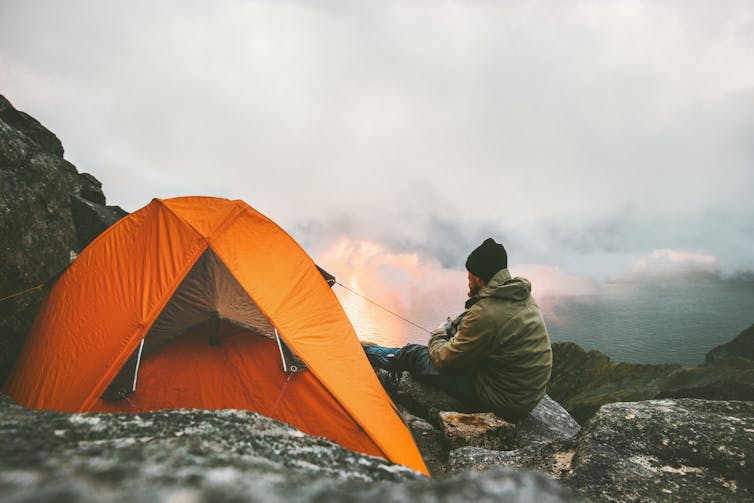
Our research also suggests hikers out for day trips or shorter walks, appear to feel there’s less risk and seem less prepared than if they were doing a longer trip.
They’re unlikely to take an emergency position indicating radio beacon (EPIRB) or personal locator beacon (PLB), which can send a distress signal and alert rescuers to your location in places with no phone reception. They may also wear sport shoes instead of hiking boots, and some don’t carry essential items for winter walking, such as a waterproof jacket or tent.
Being prepared with the right gear and experience is important regardless of how long you plan on being out. The reality is weather conditions can change suddenly, even if you’re not out for very long.
So How Can You Be Better Prepared?
In response to past hiker deaths, coronial inquests have identified better education, improved visitor management and safety measures as possible solutions.
But we’ve also identified a simple, but likely effective solution that could supplement a continued lack of appropriate gear: the use of a “gear library”.
A gear library would be set up at visitor centres where you’re usually expected to start hikes and would allow people to hire speciality gear items, such as personal safety devices (EPIRB, PLB). These can usually cost more than $200, but would be substantially cheaper in a gear library, ensuring rescue workers are notified and can find you after an accident.
Read more: Stick to the path, and stay alive in national parks this summer
It’s also important to keep a checklist to pack essential items. Some key items include:
adequate supply of food and water, including contingency items for unexpected additional days hiking because of bad weather
warm clothes, such as a waterproof jacket with hood and storm front, waterproof over-trousers, sturdy walking boots and warm clothing (a fleece or woollen jumper, thermal base layers, hat and gloves)
appropriate footwear, such as hiking boots
a tent for overnight hikes
a first aid kit
a torch.
There are plenty of resources for people seeking information about how best to prepare for their bushwalk, including national park visitor centres, Westpac Rescue Tas and the Parks and Wildlife Tasmania website. These websites provide essential bushwalking guides on what to pack and how to prepare for bushwalking.
Anyone can safely enjoy a good day out in the Tasmanian wilderness — it’s beautiful, but can also be deadly. You can never be too prepared.
Read more: Good signage in national parks can save lives. Here's how to do it right ![]()
Vanessa Adams, Senior Lecturer, Discipline of Geography and Spatial Sciences, University of Tasmania; Jason Byrne, Professor of Human Geography and Planning, University of Tasmania, and Noelle Nemeth, Master's Research Student, University of Tasmania
This article is republished from The Conversation under a Creative Commons license. Read the original article.
Growing up with trees: new books use story and science to connect kids with nature
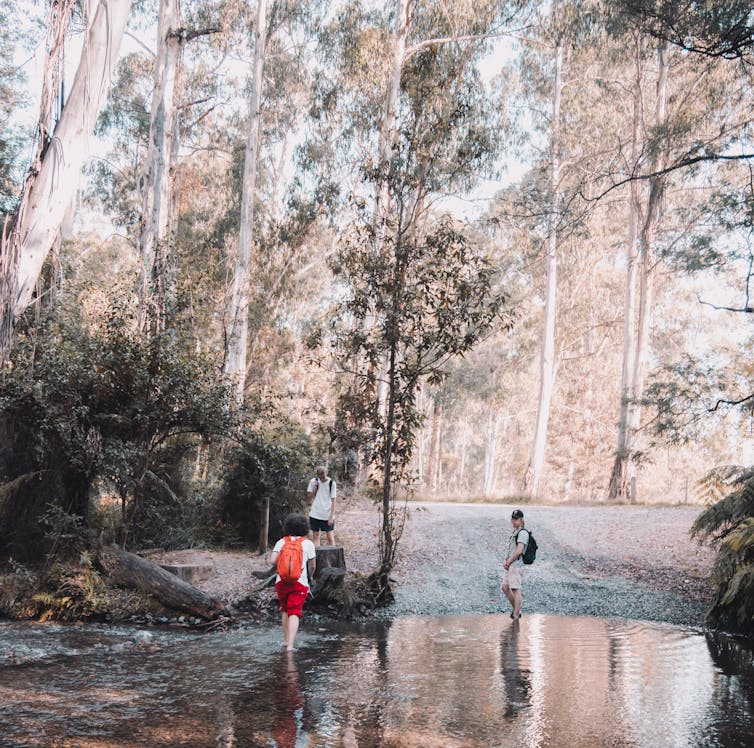
When I tell people I’m an environmental psychologist, they often assume that means I am a “tree hugger” and they are not entirely wrong. But it really means I spend a lot of time thinking and finding out about people’s relationships with the natural world, trees included.
So when I dropped in at my local book store and saw a whole collection of new books for children about trees, I found myself wondering: What kinds of books help kids connect with trees?
The question was prompted by a recent publication, The Book of Australian Trees by Inga Simpson and Alicia Rogerson. Its not the only tree book published this year, but it’s notable for its focus on Australian trees.
The last few years have seen the publication of some remarkable books about trees for children, for example Peter Wohlleben’s Can you hear the trees talking (a 2019 young reader’s edition of his book The Hidden Life of Trees) and Piotr Socha and Wojciech Grajkowski’s The Book of Trees (2018).
I love both these books, but they also illustrate why books about Australian trees and plants are needed. When Socha and Grajkowski declare: “In winter, the only green trees are coniferous trees”, or when Wohlleben suggests young readers go outside and find a birch log (likely in in their family’s store of firewood) kids in the southern hemisphere might feel lost.
Read more: People are 'blind' to plants, and that's bad news for conservation
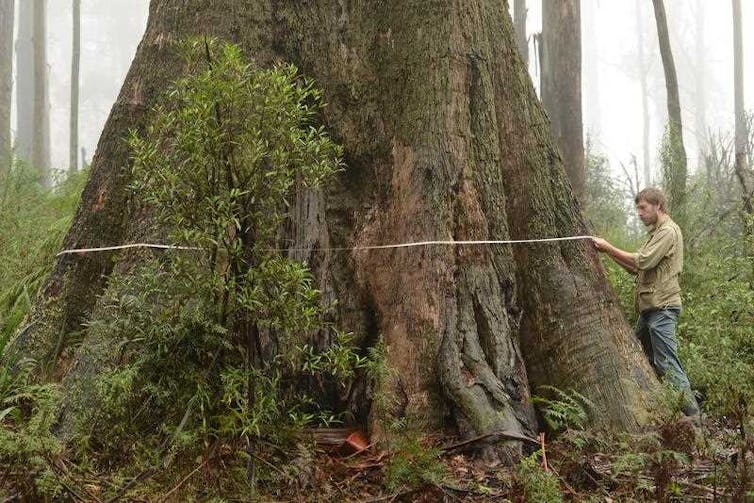
Learning To Love Plants And Trees
Having books that help children learn to love trees really matters to me. There is increasing concern that people are less connected with the natural world than in the past. Plants are of particular concern, as there is evidence of lower appreciation, knowledge and concern for plants compared with animals. Various writers have noted the negative implications of these trends for human health and well-being, environmental action, and conservation.
Direct experience of nature is often seen as essential to building connections, but it’s not always possible and might not be enough. Books can help children connect with trees, for example by:
telling stories about trees (and people’s relationships with them) that evoke empathy for trees
bridging everyday human experience with the very different life of plants
building a vocabulary for talking about nature
suggesting ways that young readers might directly engage with nature.
So how are recent children’s book authors going about this important task?
Read more: Where the old things are: Australia's most ancient trees
The Book Of Australian Trees
The introduction to Simpson and Rogerson’s book echoes some of these pathways for connection. “Trees tell stories about places,” Simpson writes and while trees may all seem the same, “if you look more closely, they are each a little different, like people”.
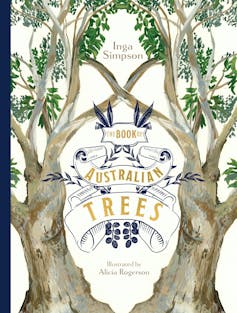
The book introduces just 16 different trees, most from the eastern mainland states of Australia. Each species is introduced with a single painting by Rogerson, often showing the trunk and lower canopy but sometimes just a part of the trees such as a Bunya Pine nut or a flower.
Simpson’s text is brief. It includes visual characteristics of the tree, the kinds of soils or climate in which it grows, and usually a an insight to cultural associations with the tree. Some entries refer to “famous trees”, for example Centurion, the tallest mountain ash tree found in Tasmania. Others refer to Australian literary references to trees, like the “Old Man Banksias” of May Gibbs’ Snugglepot and Cuddlepie stories.
I enjoyed Simpson’s evocative description of trees, particularly of bark and the ways it differs across trees and seasons. These often emphasise the links between visual attributes of trees and familiar human characteristics. Brush box branches “grow out like arms, with crooked elbows, then wrists and long fingers”. But while Simpson describes the kind of environments in which the trees typically grow, there is little sense of story or sense of place in these descriptions.
Books on trees and plants often focus purely on ecological qualities. Simpson incorporates cultural aspects of trees as they offer an important means of connection. But these are not always well considered. Linking magnificent Flame Trees to Cold Chisel’s 1984 song about “lost loves or old flames” seems unlikely to resonate with younger readers. Only a single entry (Bunya Pine) references relationships with First Nations peoples that have been maintained over many thousands of years.
The book is beautifully illustrated and celebrates the beauty of trees of this land — the flyleaf paintings of leaves, bark, cones, seeds, and blossoms lend themselves to a plant-rich conversation with younger readers.
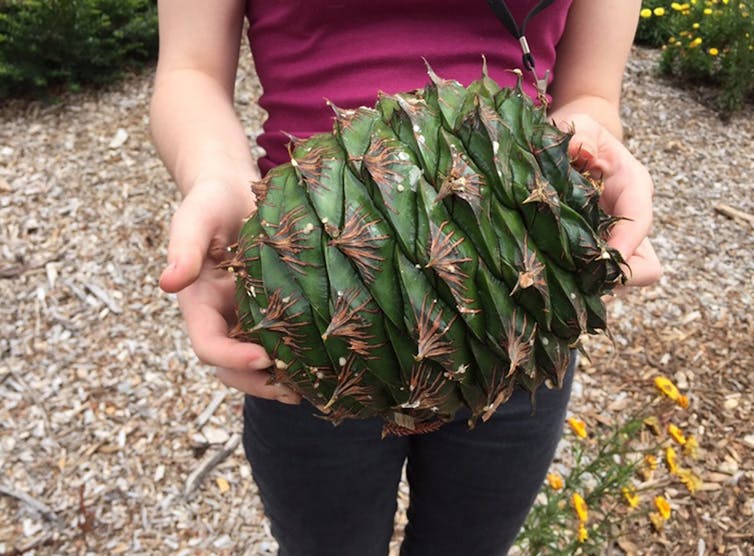
4 More To Choose From
Other recent books about trees make great use of stories, emotion, science and tree-related activities to help children connect with trees.
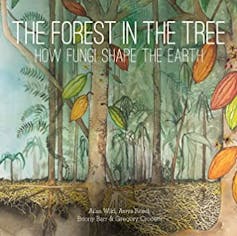
The Forest in the Tree (by Australian team Ailsa Wild, Aviva Reed, Briony Barr and Gregory Crocetti) skilfully weaves story and science to explore symbiotic relationships between trees and fungi. Characters include Broma the Cacao tree and We, Gloma the fungal network that connects the forest system. It is sure to fascinate and inform older children.
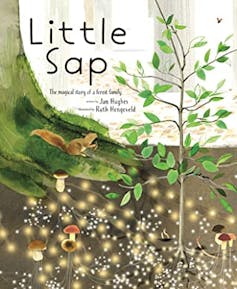
Little Sap (by Jan Hughes and Ruth Hengeveld) is written for a much younger audience. It tells a moving tale of a mother tree and a young sapling who eventually takes her place in the canopy. The authors note they found inspiration in the science of Suzanne Simard and Monica Gagliano among others.
Peter Wohlleben has also published a book for younger children. His book Peter and the Tree Children is a tale about Peter the forester and Piet the squirrel, and all they learn while walking in the forest.
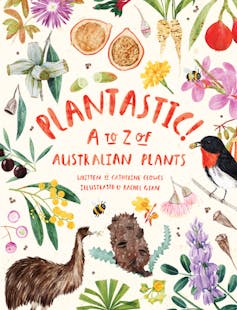
I found it less engaging than his earlier book Can you hear the trees talking which is structured around curious questions like “How do trees make babies?” or “Is there a forest internet?”.
Finally, Plantastic! A new A-Z to 26 of Australia’s most unique and incredible native plants by Catherine Clowes and Rachel Gyan deserves a mention. Its not only about trees, but suggests some great activities that will encourage Australian kids to get out into nature and explore the wonder of plants.![]()
Kathryn Williams, Professor in environmental psychology, School of Ecosystem and Forest Sciences, The University of Melbourne
This article is republished from The Conversation under a Creative Commons license. Read the original article.
Elder, lawman, survivor: new stamp discovery is the latest chapter in Gwoja Tjungurrayi's remarkable life in pictures

Aboriginal and Torres Strait Islander readers are advised this article contains images and names of deceased people.
Every contemporary Australian has likely seen Gwoja Tjungurrayi’s image. Tjungurrayi, a stockman, traditional lawman, and survivor of the brutal 1928 Coniston massacre, is the Warlpiri-Anmatyerr Aboriginal man engraved on our two dollar coin.
Tjungurrayi (whose name is sometimes spelled Gwoya Tjungurrayi, Gwoya Jungarai or Gwoya Djungarai) first rose to unlikely fame not on currency, but on the face of a postage stamp. In 1950 he became the first living Australian — settler or Aboriginal — to be featured on a stamp.
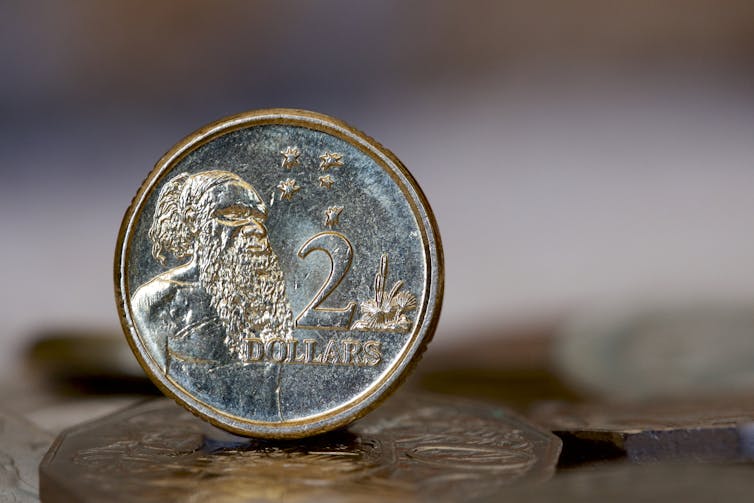
From 1950 to 1966, 99 million stamps featuring Tjungurrayi’s portrait were sold, and he became known to Australia and the world as “One Pound Jimmy”.
Now, fresh research has revealed the 1950 stamp was, in fact, not the first to feature Tjungurrayi. The discovery is the latest twist in a life story told in images.
The Face Of Geelong
In 1938, a postage stamp was released to mark the centenary of the Victorian town Geelong. It has no decimal mark as it was not issued by the Post-Master General’s Department. Hence it could not be used to send mail but was produced by the city as a collector’s item.
While researching images of Aboriginal people on stamps, in an online stamp collecting forum, I realised the man on the Geelong stamp was unmistakably Tjungurrayi, pictured 12 years before the “One Pound Jimmy” stamp. It’s the first time the image has been formally identified as Tjungurrayi.

Both stamps are based on a Roy Dunstan photograph of Tjungurrayi that first appeared in the Australian National Travel Association magazine Walkabout in 1936. Tjungurrayi had encountered Dunstan and magazine editor Charles Holmes east of Alice Springs, allowing Dunstan to take his photograph.
This chance encounter had a lasting impact on Tjungurrayi’s life, transforming him into an enduring public figure.
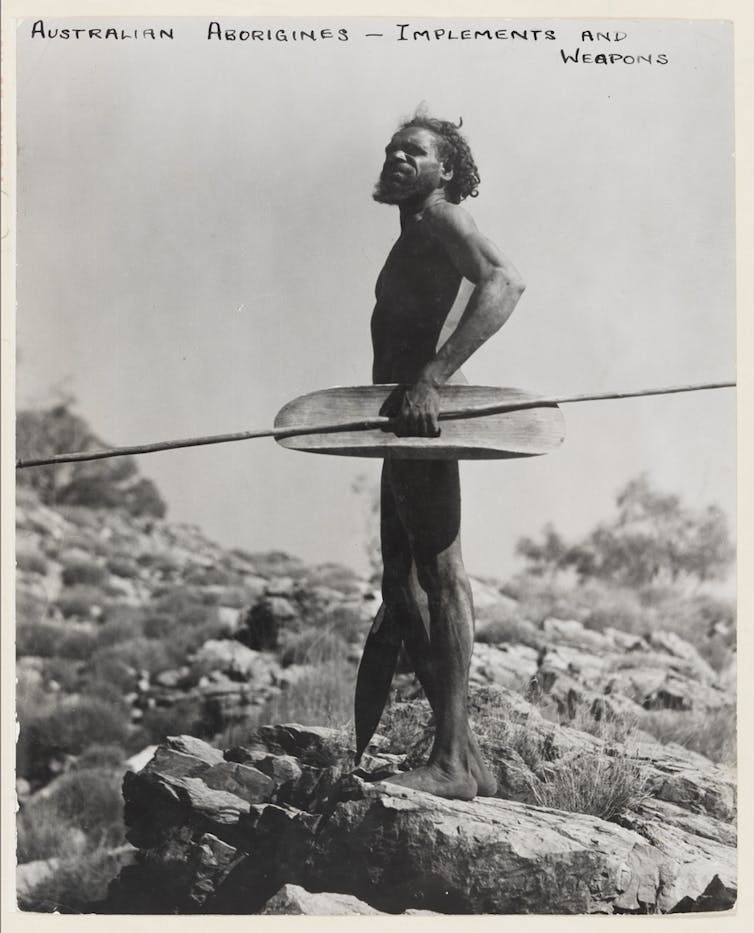
A Remarkable Life
Tjungurrayi was born around 1895 in the Tanami Desert north-west of Alice Springs. He was a survivor of the 1928 Coniston massacre in which up to 70 people were brutally murdered.
One son described Tjungurrayi “worm[ing] his way out from among the dead and dying”. Another son said he was captured and chained to a tree, but freed himself. He fled to the Arltunga region.
Tjungurrayi was a stockman and station hand by trade. But he was also a traditional lawman, land custodian, cultural intermediary and guide for visiting anthropologists, and family man. He took his responsibility as a father and law custodian very seriously, and was dedicated to ensuring traditional law and knowledge of country was passed down to future generations.
Tjungurrayi died in March 1965, having lived many years in the Tanami region. Obituaries to him appeared in Northern Territory News and on the Centralian Advocate’s front page.
Between Federation in 1901 and the 1930s, Aboriginal people were conspicuously absent in visual representations of Australian nationhood, which centred on native flora and fauna.
The use of Aboriginal motifs on stamps prior to Tjungurrayi’s image in 1950 was rare. The first stamps to feature Aboriginal themes were released between 1934 and 1950 — but there were only four designs and they didn’t portray real people.
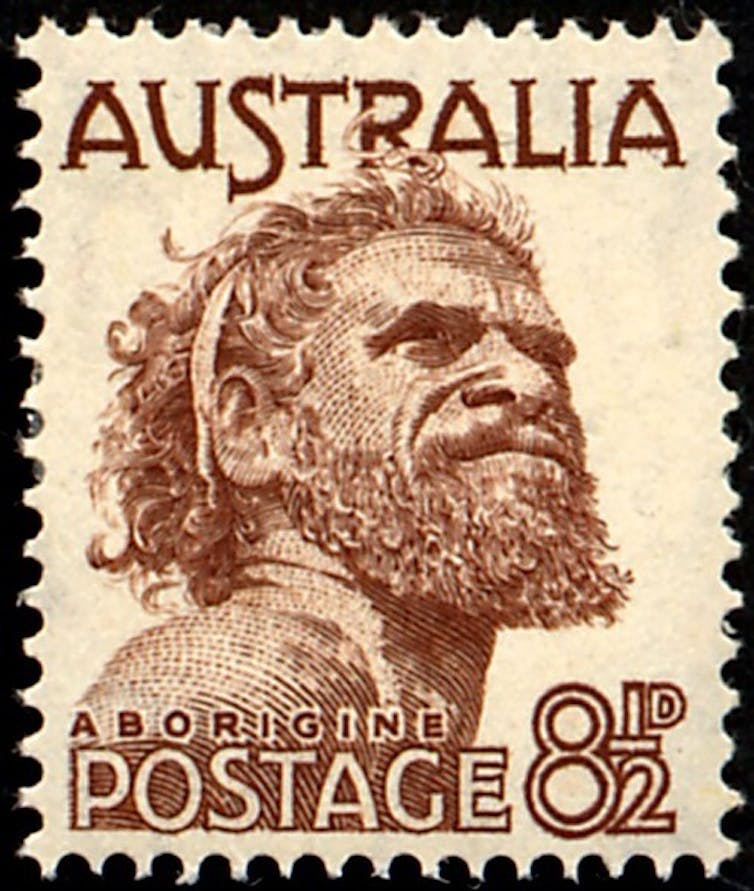
Still, the use of images like that of Tjungurrayi exemplify what academic Jillian E. Barnes calls the “pioneer tourist gaze”, presenting him as an adversarial “other”.
Australian modernist artists and writers at this time such as Margaret Preston and the Jindyworobak literary movement became interested in Aboriginal designs and mythology, often appropriating these in their work.
“Aboriginalia” souvenirs and bric-a-brac depicting Aboriginal people according to racial stereotypes were displayed in suburban homes. Aboriginal people’s creative works and performances meanwhile, were still commonly classified as “ethnography”, not art, thus they were not afforded the opportunity to represent themselves and their own culture.
The 1938 stamp shows an apparently “authentic” Aboriginal presence in Australia, but relegates it to a distant and ancient time. In doing so it suggests the contemporary presence of Aboriginal people was anachronistic.
Read more: Friday essay: the politics of Aboriginal kitsch
A New Generation
The Geelong centenary stamp may have drawn inspiration from a 1934 Victorian centenary stamp. In both, a standing Indigenous figure is used to contrast the supposed “stasis” of Aboriginal pre-history with the “progress” and modernity of the Australian settler colony.
But as Tjungurrayi’s own life story demonstrates, Aboriginal people continued to survive and thrive, often against the odds. Tjungurrayi’s three sons became leaders in the Western Desert art movement in the 1970s.
One son, Clifford Possum Tjapaltjarri, became one of Australia’s best known and well regarded Aboriginal artists.
In 1988, a new chapter in legacy of the family’s engagement with the postage stamp began.
The painting Ancestor Dreaming (1977) by Tjungurrayi’s son Tim Leura Tjapaltjarri was featured on an Australia Post stamp as a part of a series celebrating Western Desert art.
Unlike his father’s designation as “Aborigine” in 1950, or his anonymity on the 1938 stamp, Tim was showcased as a significant artist.
In 2019, the Northern Territory electorate formerly named Stuart was renamed Gwoja in honour of Tjungurrayi.
Contemporary Australia is finally willing and able to remember and celebrate Tjungurrayi as an Elder, lawman and survivor.
Read more: A stamp of approval for legendary sports commentators - but only the male ones ![]()
Paige Gleeson, PhD Candidate, University of Tasmania
This article is republished from The Conversation under a Creative Commons license. Read the original article.
Curious Kids: where do swallows sleep?
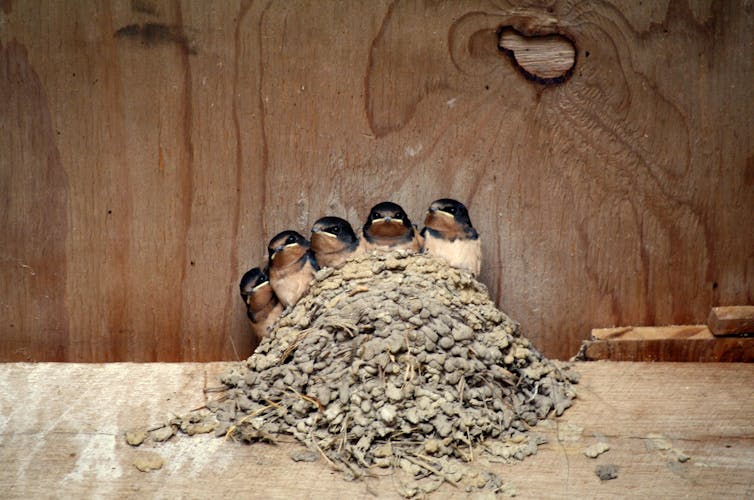
Curious Kids is a series for children. If you have a question you’d like an expert to answer, send it to curiouskids@theconversation.edu.au You might also like the podcast Imagine This, a co-production between ABC KIDS listen and The Conversation, based on Curious Kids.
I would like to find out something about swallows: we have noticed that they return to the same nests each year, but there must be younger birds that have no nest. Where do they sleep until they have built their new nest? – Nefeli, age 13, Corfu, Greece.
Thank you for your question, Nefeli.
It’s true that some swallows return to the same nests each year. But what do they do there?
We need to understand what nests are really for – and they are not for sleeping. They are for putting eggs into. The eggs need protection from the weather (hot and cold, wind and rain) and from other animals that would eat them. For predators, eggs taste great!

Eventually the eggs hatch, then a blind and featherless baby swallow emerges. The babies are called nestlings or sometimes chicks. So nests are not for sleeping, they are for raising a family.
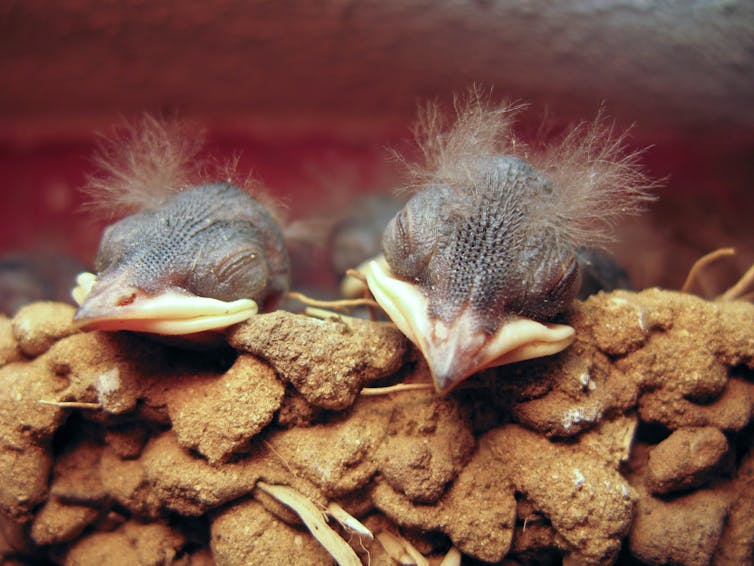
It is true that when an adult is sitting on eggs and nestlings, it may sleep, especially at night.
But the young swallows who don’t have a nest to return to must build their own nest (to protect and feed their babies) or sleep on a tree branch, a rock ledge of a cliff face, or inside the hollow of a tree.
When swallows sleep away from the nest they sleep in places called roosts.
So remember: nests are mostly for babies; roosts are for sleep.
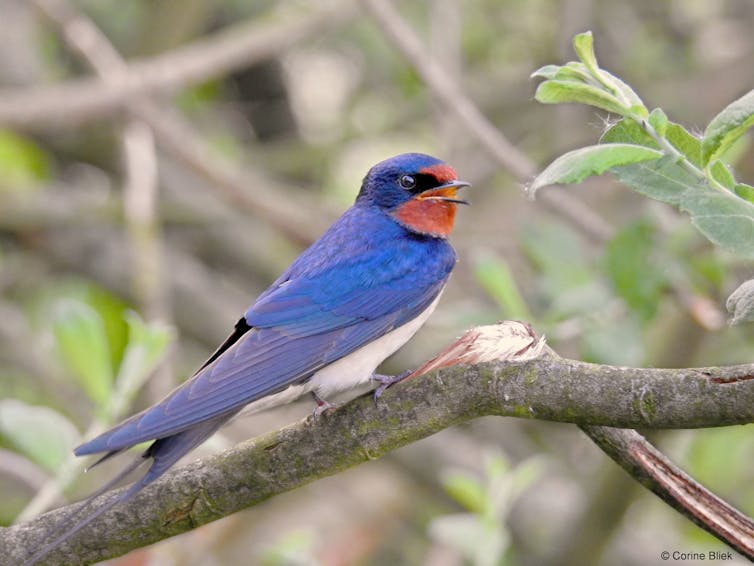
Read more: Curious Kids: is water blue or is it just reflecting off the sky?

Hello, curious kids! Have you got a question you’d like an expert to answer? Ask an adult to send your question to curiouskids@theconversation.edu.au Please tell us your name, age and which city you live in. We won’t be able to answer every question but we will do our best.![]()
Graham Fulton, PhD student, School of Biological Sciences, The University of Queensland
This article is republished from The Conversation under a Creative Commons license. Read the original article.
Curious Kids: if trees are cut down in the city, where will possums live?
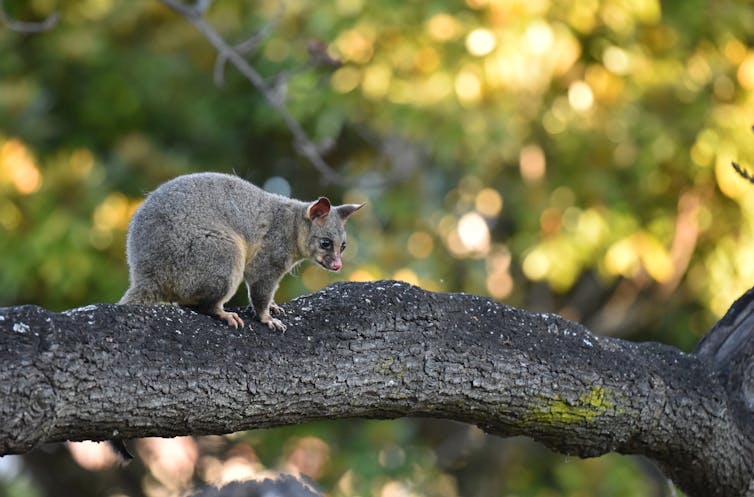
If trees are cut down in the city, where will possums live? - Millie, age 9, Sydney.
Hi Millie.
Thanks for your question. I worry about this too.
Trees are really important to possums in the city. Like lots of Australian animals, possums depend on hollows — a hole that forms in trees as they get older. Because possums are nocturnal (meaning they only come out at night), they need somewhere safe to curl up and sleep during the day. A nice cosy tree hollow is the perfect place.
Tree hollows are special because they take a long time to make. They usually happen when a tree gets injured and the place where it broke starts to rot away, eventually forming a hole. Most types of gum tree don’t even start making hollows until they’re more than 100 years old. Usually, the bigger the tree, the more hollows you’re likely to find.
Out in the bush, a possum might have lots of different trees and hollows to choose from. Some kinds of possum might have 12 different hollows – 12 bedrooms! Can you imagine?
But in the city, we don’t have as many big trees with hollows, so possums can’t be as picky about their bedrooms. And when a big old tree dies or is cut down, even if we plant a new one we might have to wait hundreds of years before it provides a good possum house. This means the possums have to look for somewhere else to live.
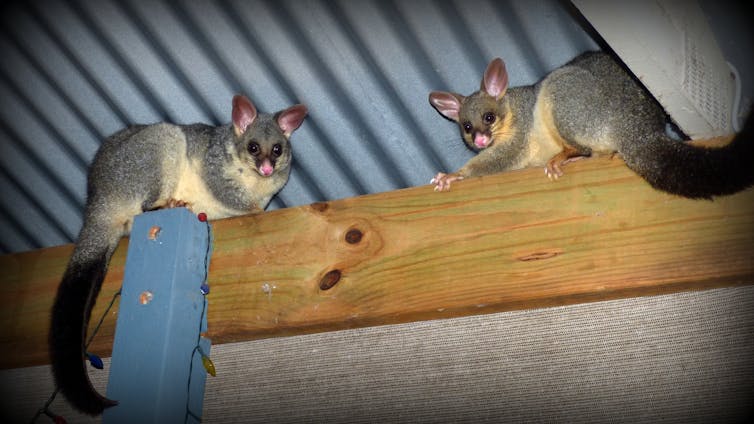
Read more: Curious Kids: if our bodies are happy at 37℃, why do we feel so unhappy when it's too hot outside?
Other Possum Places In The City
Now, there are a few other places that possums might find in the city.
They want somewhere dark, dry and warm, and they don’t mind if they’re not supposed to be there.
That’s why people often find possums sleeping in their roof, in old pots in the garden, or even inside a barbecue!
Tiny possums can squeeze into even smaller places. Sugar gliders are sometimes found in electricity boxes, and feathertail gliders might nest in a drainpipe.
It’s amazing how resourceful animals can be! But these aren’t very safe places for possums to make a home. So there are two things we can do to help.
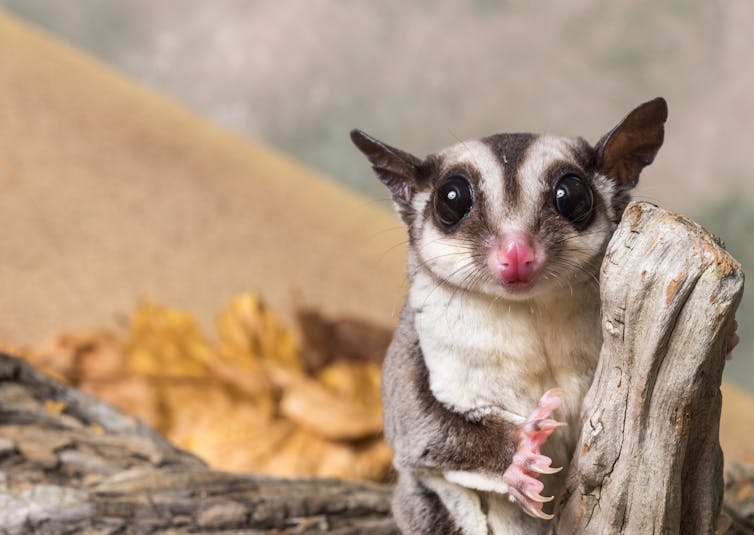
1. Protect Our City’s Big Trees
There aren’t many left, so every single tree is important. And it’s not just gum trees — lots of types of trees make hollows or provide food for native animals. Even dead trees!
Great big trees can get dangerous as they get older because if they drop branches or fall over they could hurt someone. Sometimes tree experts can use cables to keep the trees upright and safe, or only cut down the dangerous branches.
Or sometimes we can fence the area so that people don’t walk underneath. If a tree does have to be cut down, scientists came up with an idea to move the whole tree to a new spot — like a tree transplant! The tree can’t grow anymore, but it still has all the hollows possums and other animals need to make their homes.
2. Build New Possum Homes
There are lots of different ways to build new hollows for wildlife. Nest boxes (sometimes known as dreys) might be made out of wood, or old hollow logs, or even pot plant liners.
Sometimes local councils will use a chainsaw to carve holes into trees to make new homes for wildlife.
And other scientists are using 3D printers to make hollows that mimic the same shapes as real hollows (but we need to make sure the designs are safe).
City trees are so important. They help keep us cool in summer, make the air nice and fresh, and they’re nice to look at. Some of them have been here longer than the buildings.
So protecting trees in the city isn’t just good for possums. It’s good for humans, too.
Read more: Curious Kids: why does the sun's bright light make me sneeze?
Hello, Curious Kids! Have you got a question you’d like an expert to answer? Ask an adult to send your question to curiouskids@theconversation.edu.au![]()
Kylie Soanes, Postdoctoral Fellow, School of Ecosystem and Forest Sciences, The University of Melbourne
This article is republished from The Conversation under a Creative Commons license. Read the original article.
Stolen Generations Survivors Face Poorer Health And Wellbeing Outcomes Than Other Indigenous Australians: New Report Released
Australia Leads Project That Will Burst The Hubble Bubble
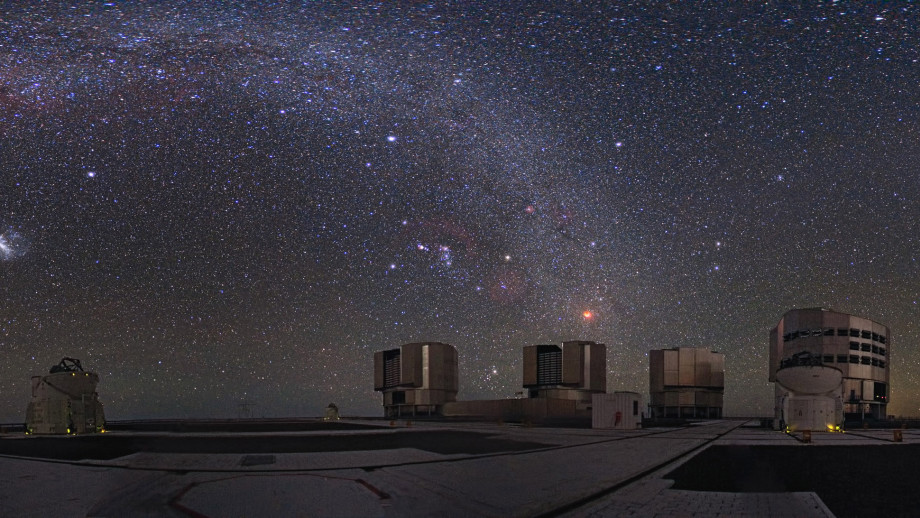
$24 Million To Fund Innovation Solutions From NSW Small Businesses
Overweight Or Obesity Worsens Liver-Damaging Effects Of Alcohol
- - People who drank above UK alcohol guidelines had, compared to within guideline drinkers:
- o A nearly 600 percent higher risk of being diagnosed with alcoholic fatty liver disease (5.83 hazard ratio).
- o A nearly 700 percent higher risk of death caused by alcoholic fatty liver disease (6.94 hazard ratio).
- - People with overweight or obesity who drank within or above alcohol guidelines had over 50 percent greater risk of developing liver disease compared to normal weight participants who consumed alcohol at the same level.
Carp Diem: Pest Seizes On Post 100 Year Flood Conditions - Native Fish At Risk
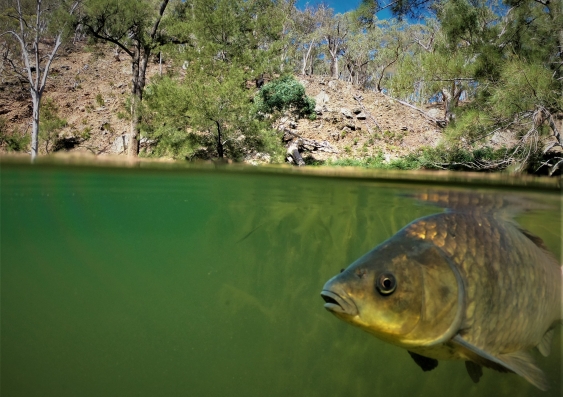
 Mr Cruz says carp can have extremely large numbers of offspring.
Mr Cruz says carp can have extremely large numbers of offspring.Space Junk: Houston, We Have A Problem

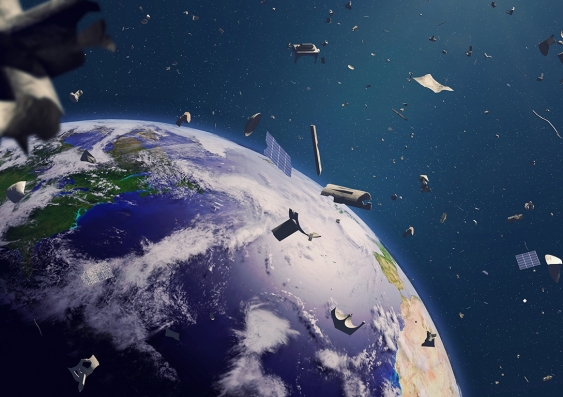
Plastic In Galapagos Seawater, Beaches And Animals
- Just 2% of "macroplastic" (items and fragments larger than 5mm) was identified as coming from the islands. The true figure could be higher, but the findings strongly suggest most plastic arrives on ocean currents.
- These macroplastics were found at 13 of 14 sandy beaches studied, with 4,610 items collected in total. Large microplastics (1-5mm) sieved from the surface 50mm of sand were found at 11 of 15 sites tested.
- Significant accumulations of plastic were found in key habitats including rocky lava shores and mangroves.
- Microplastics were found in low concentrations in all seabed and seawater samples, with higher concentrations at the harbour suggesting some local input.
- All seven marine invertebrate species examined were found to contain microplastics. 52% of the 123 individuals tested contained plastic.
Revealing The Mysteries Of Stonefish Venom
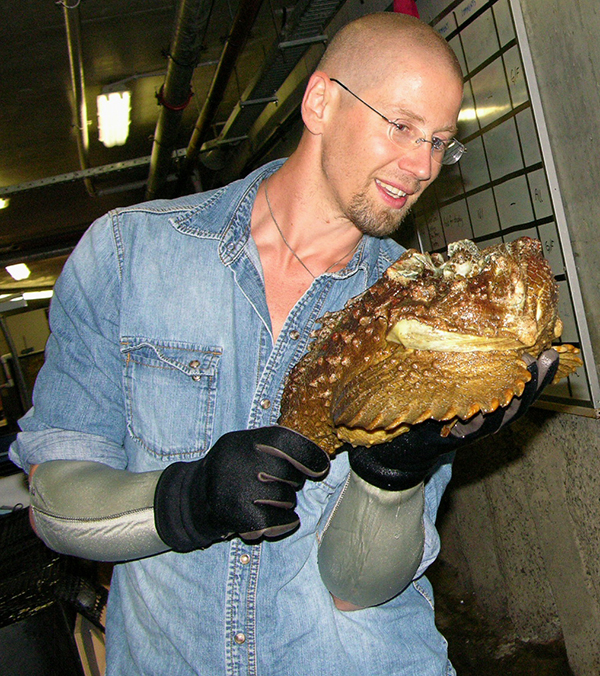 June 1, 2021
June 1, 2021Parasites May Accumulate In Spleens Of Asymptomatic Individuals Infected With Malaria
Disclaimer: These articles are not intended to provide medical advice, diagnosis or treatment. Views expressed here do not necessarily reflect those of Pittwater Online News or its staff.